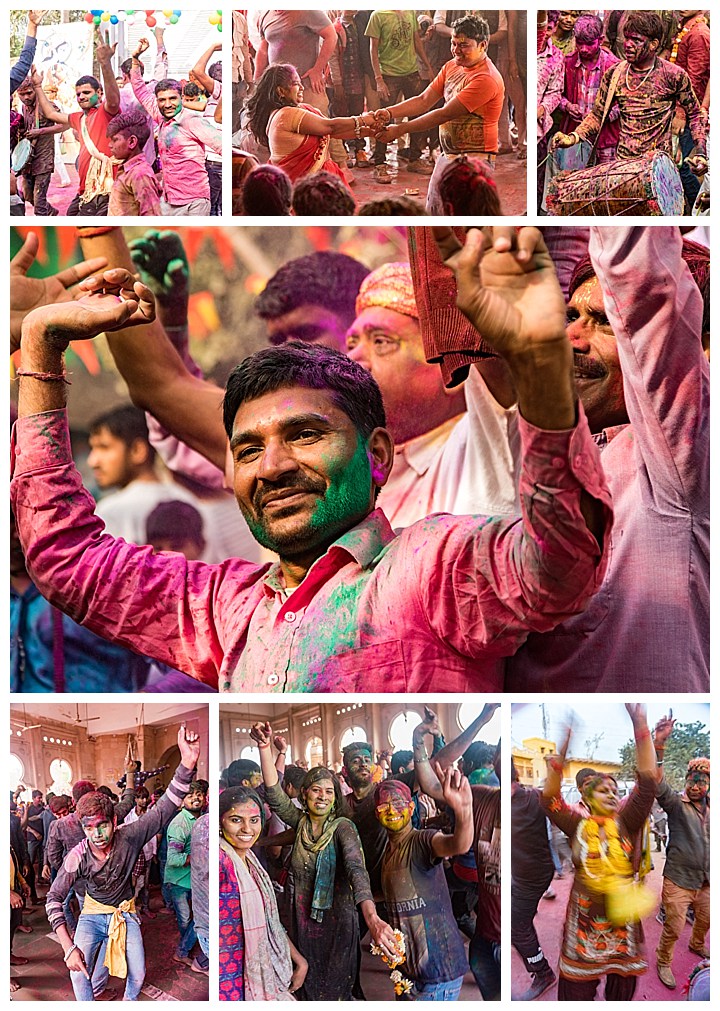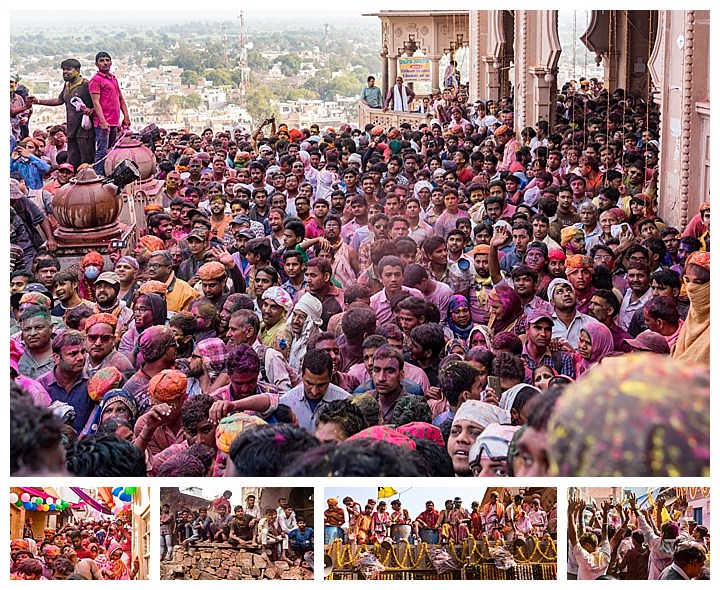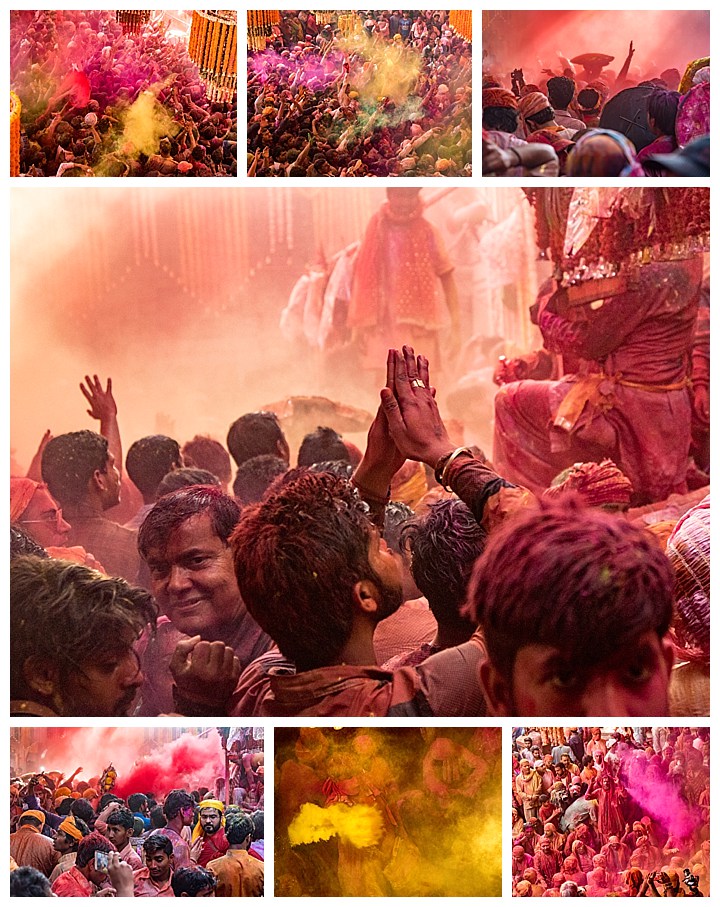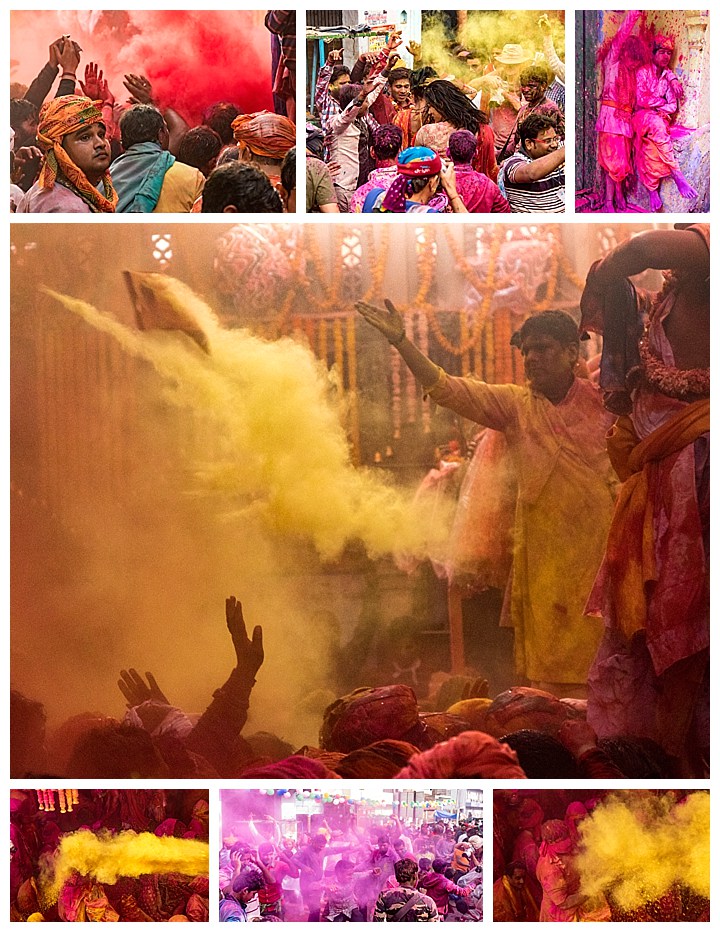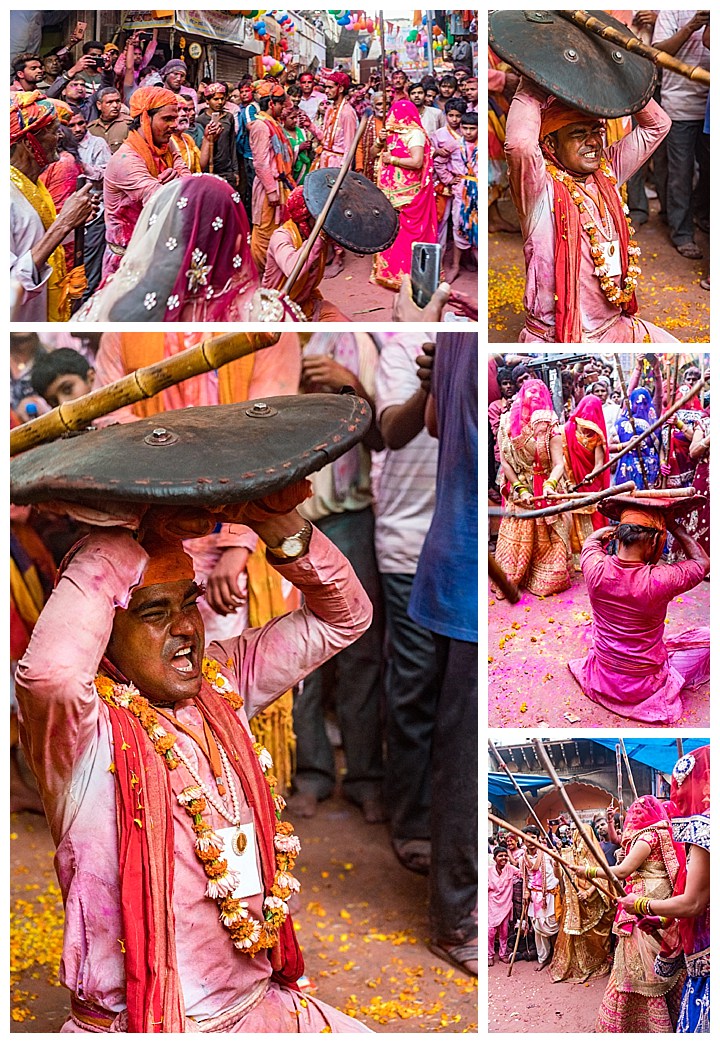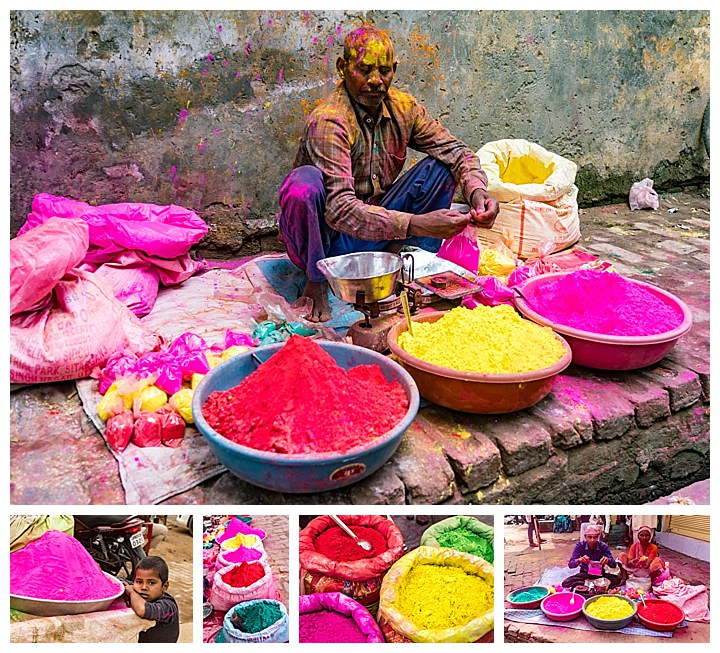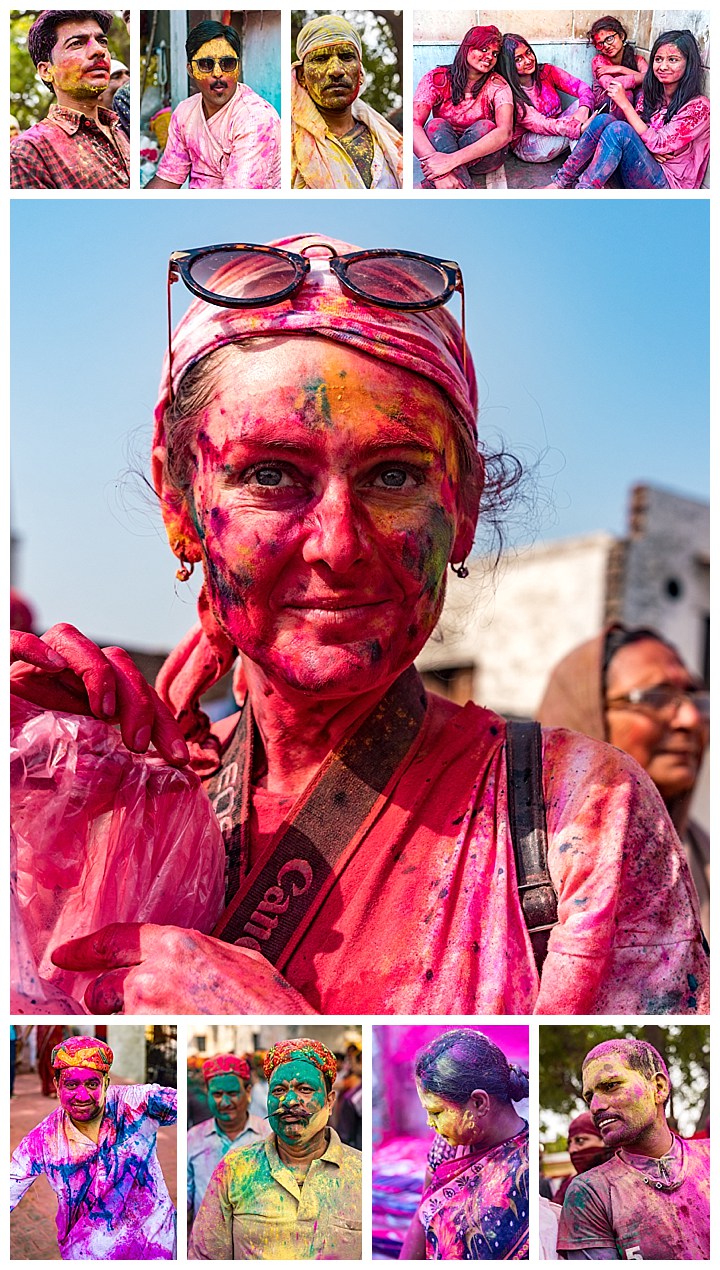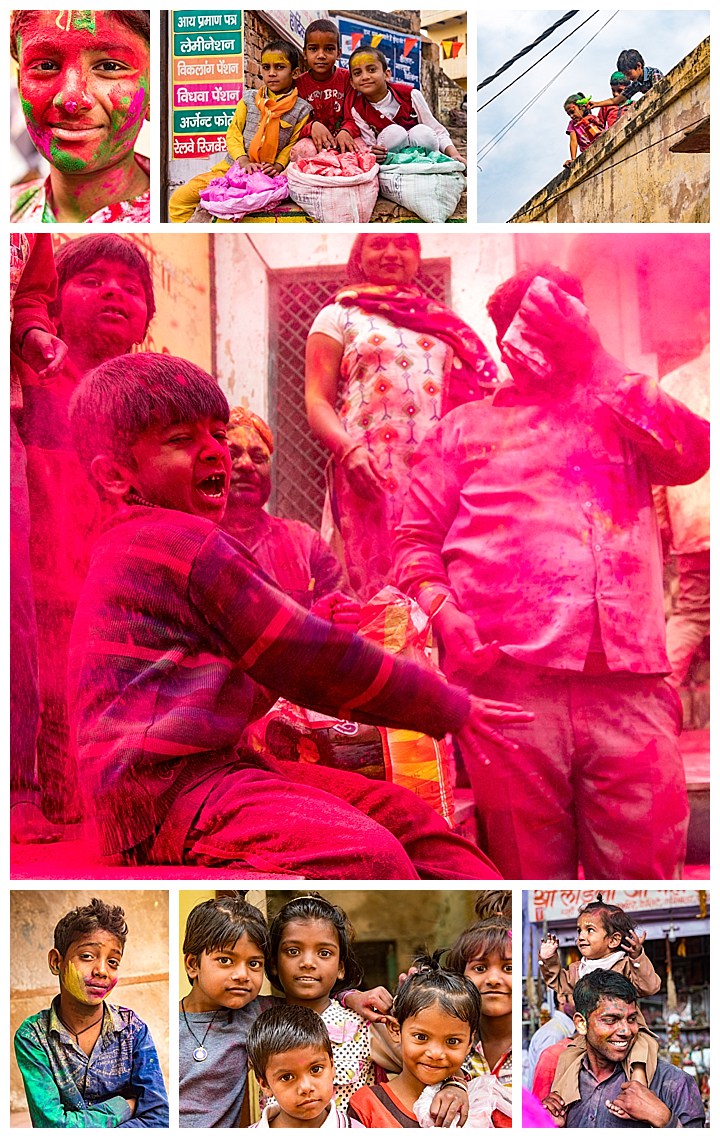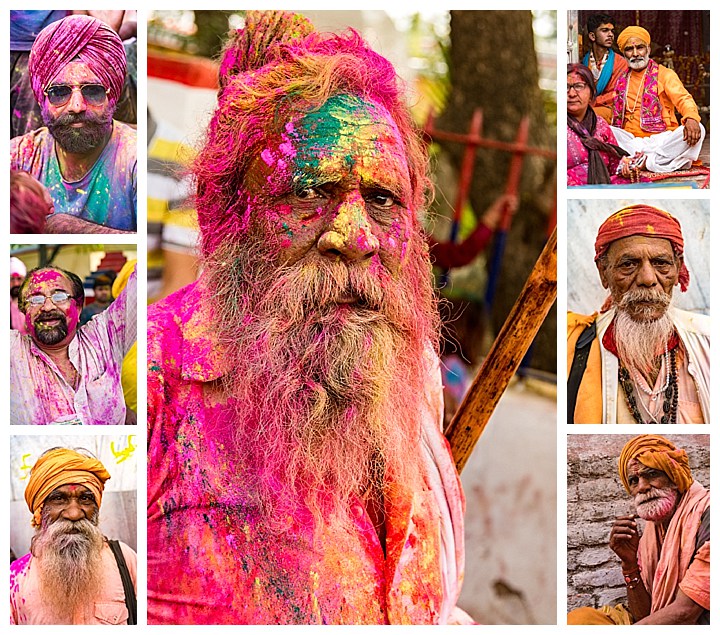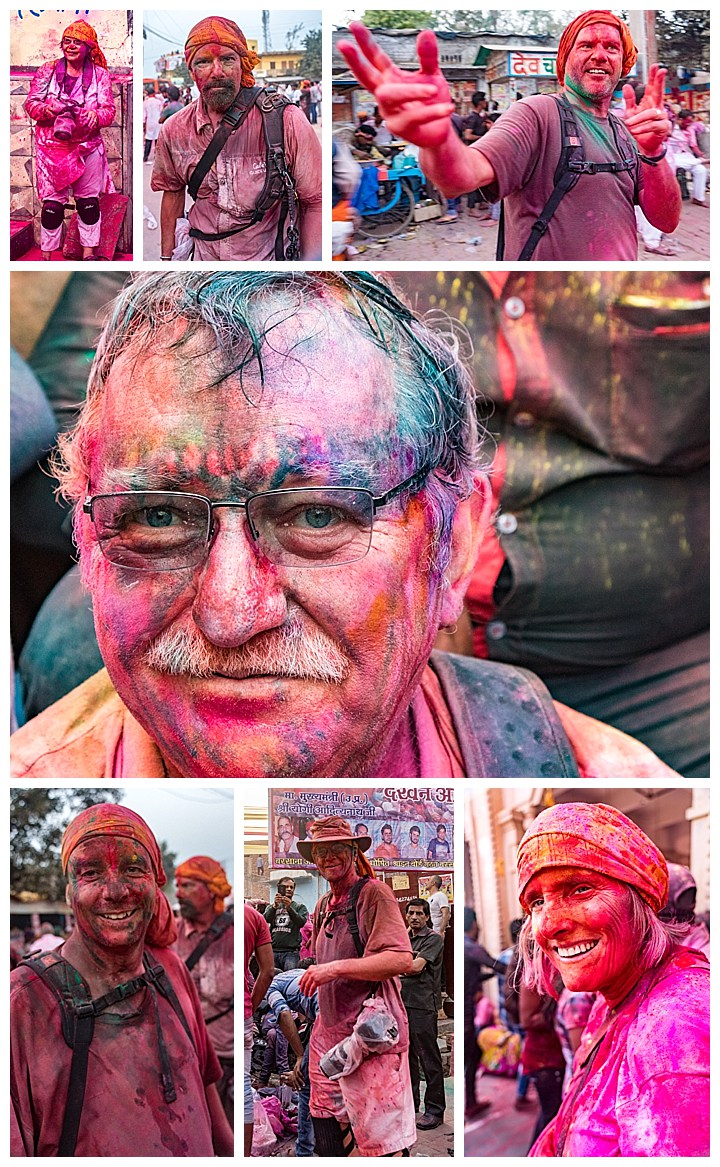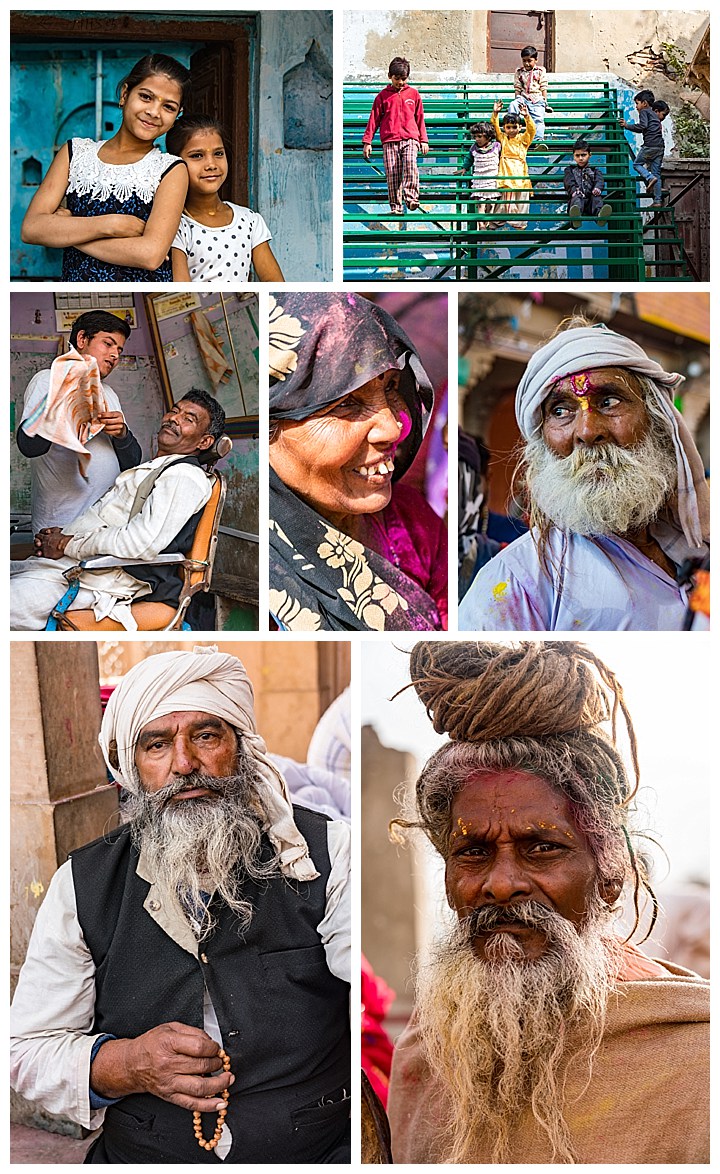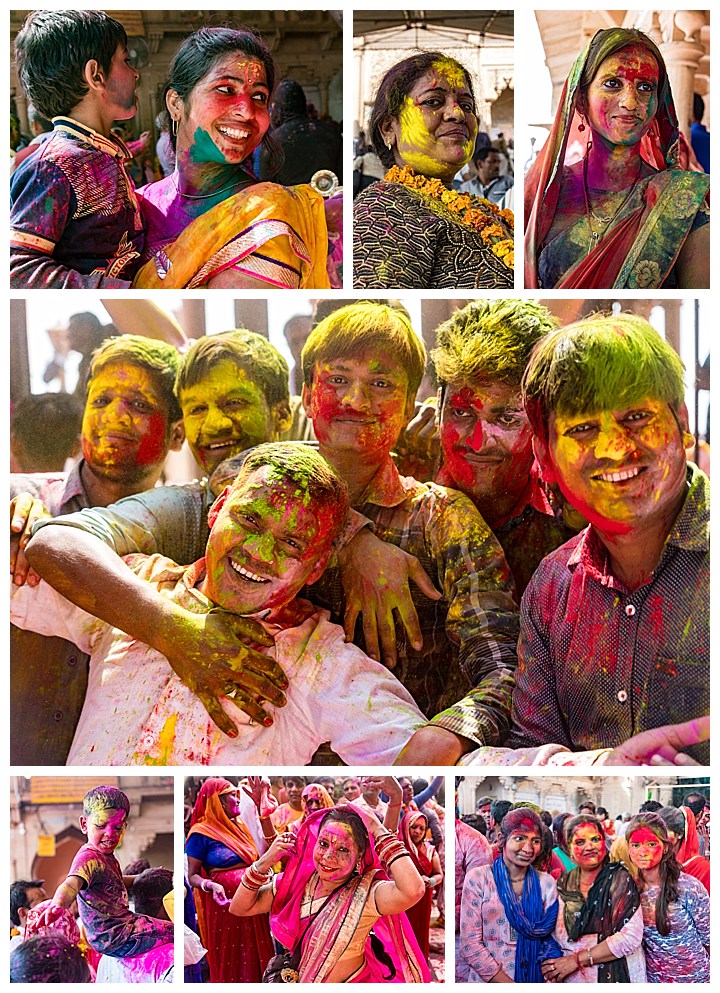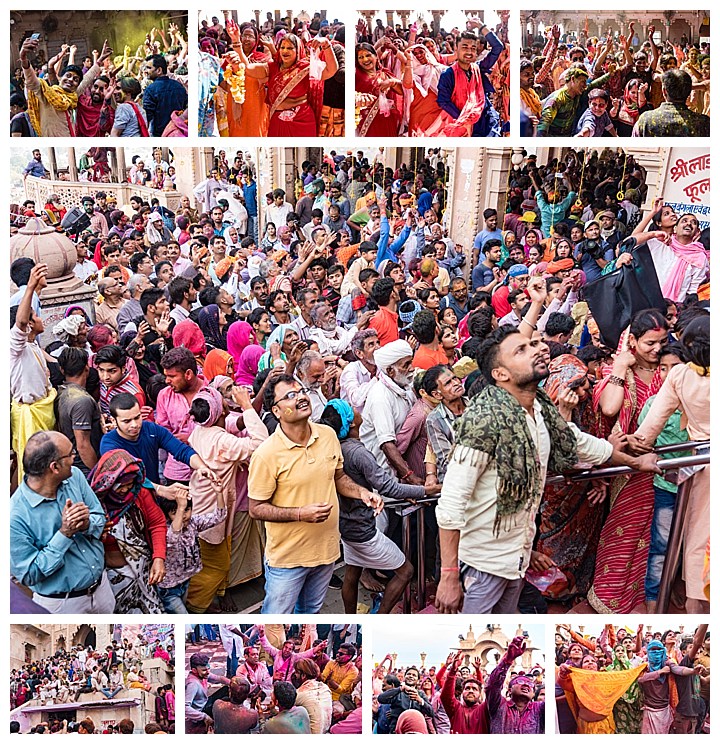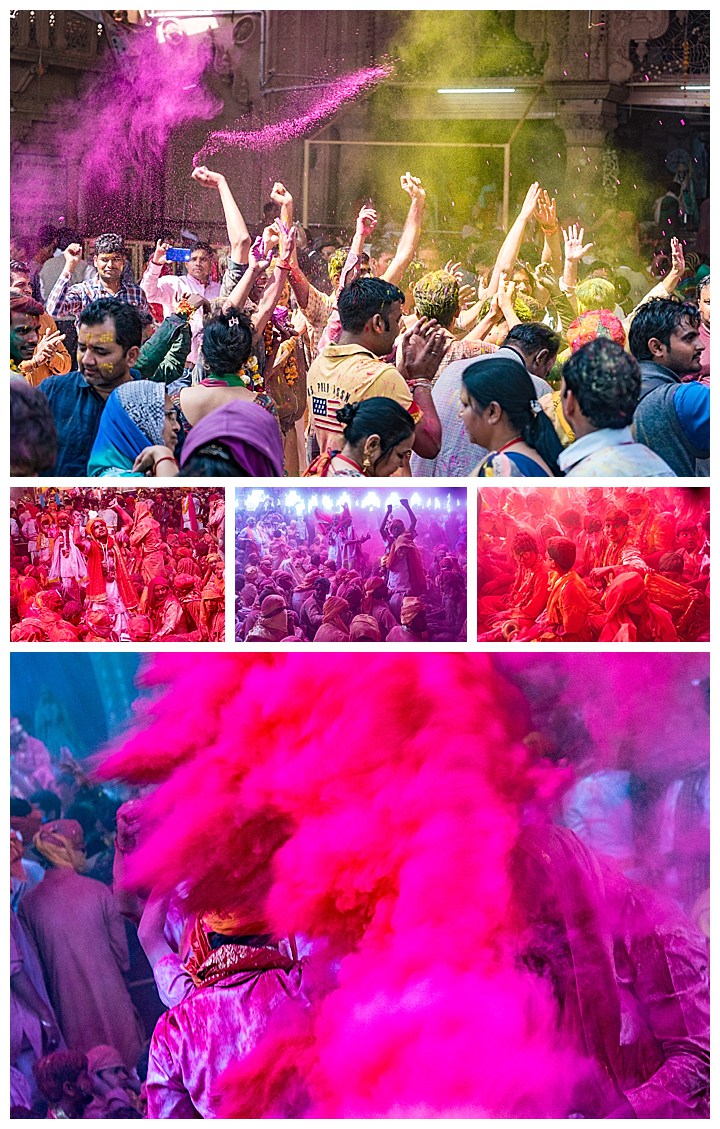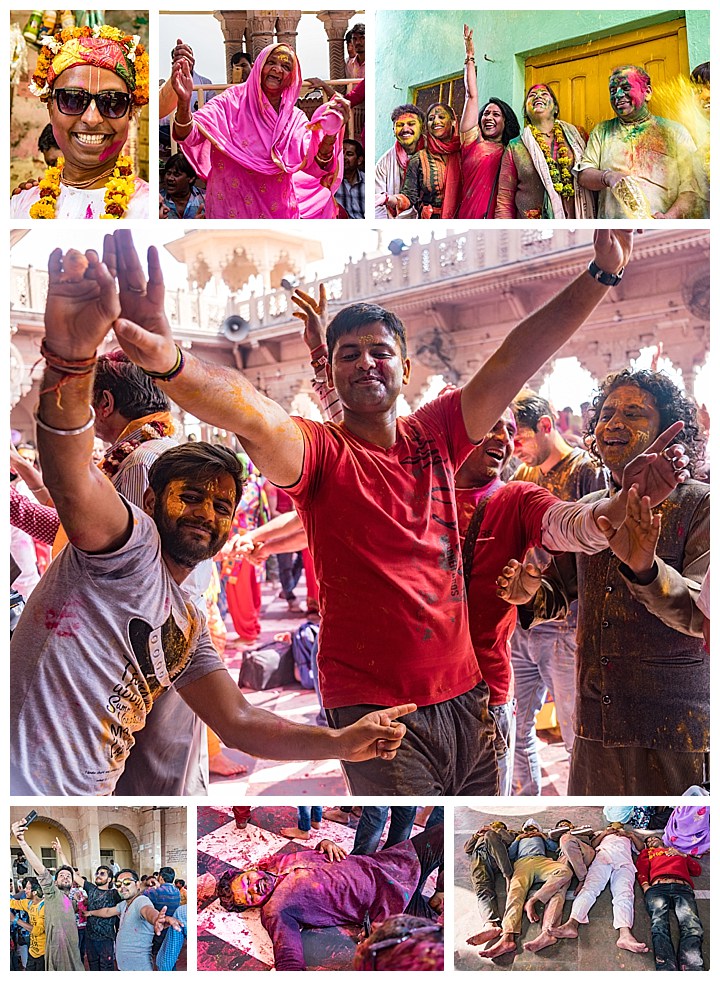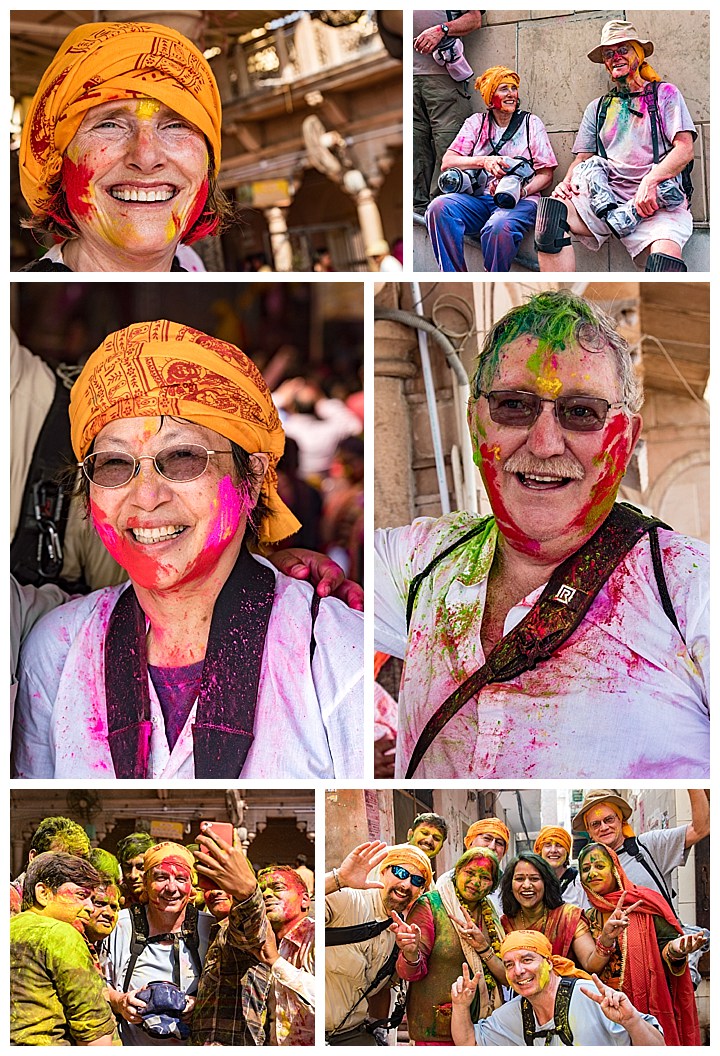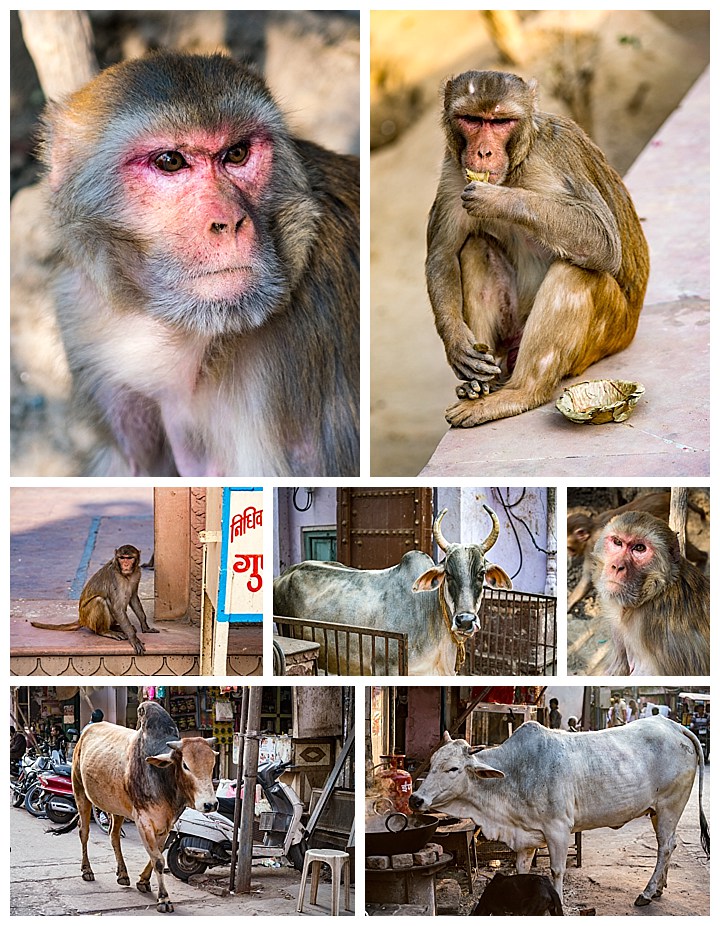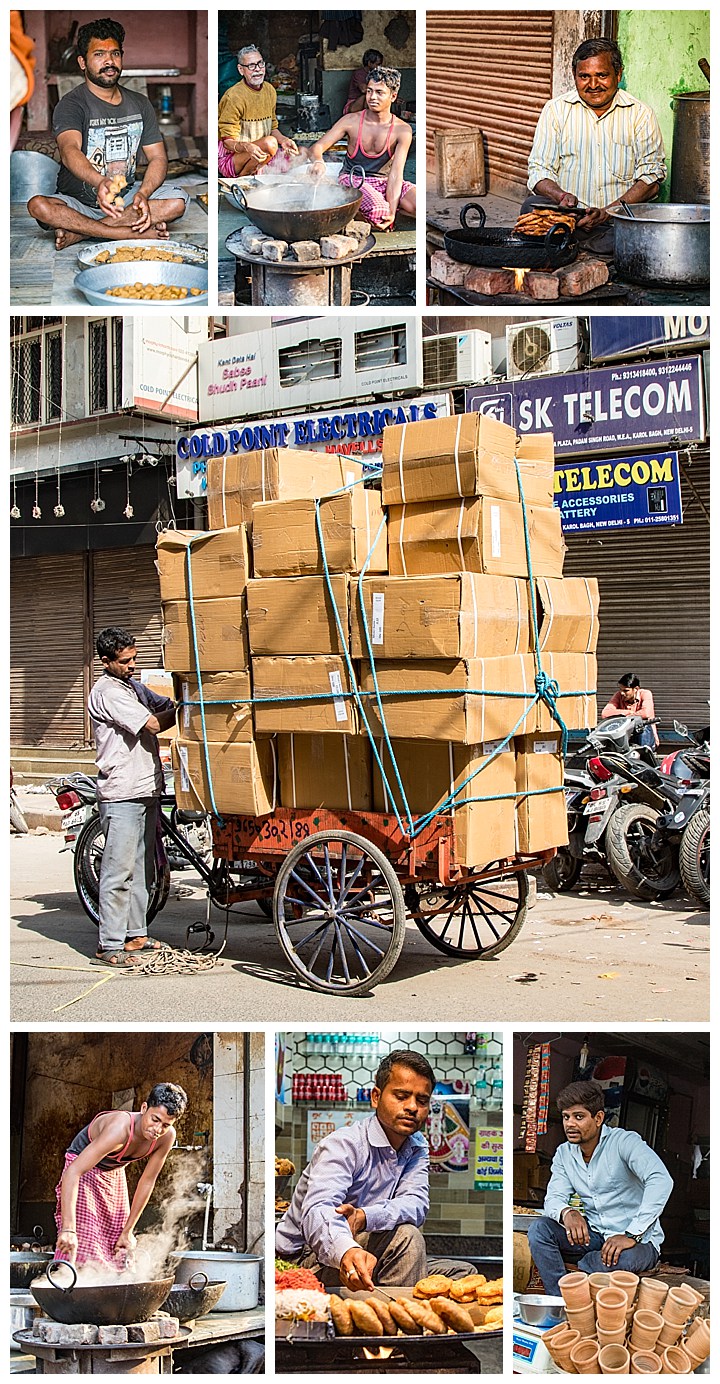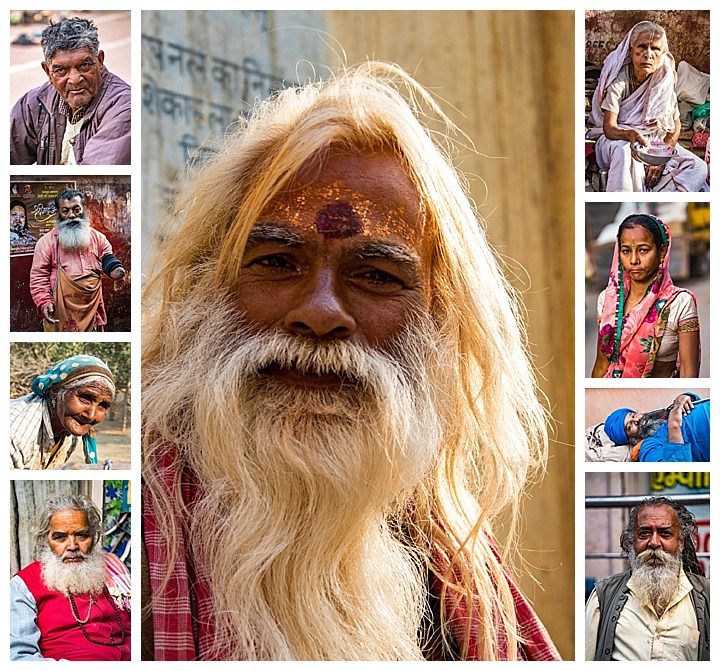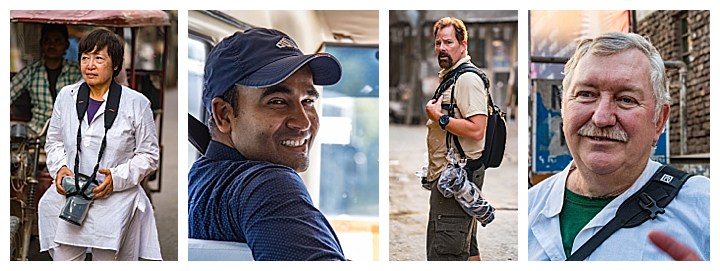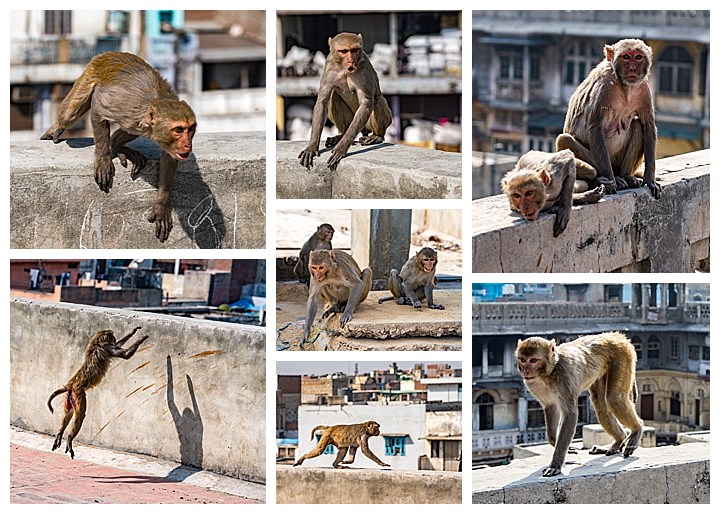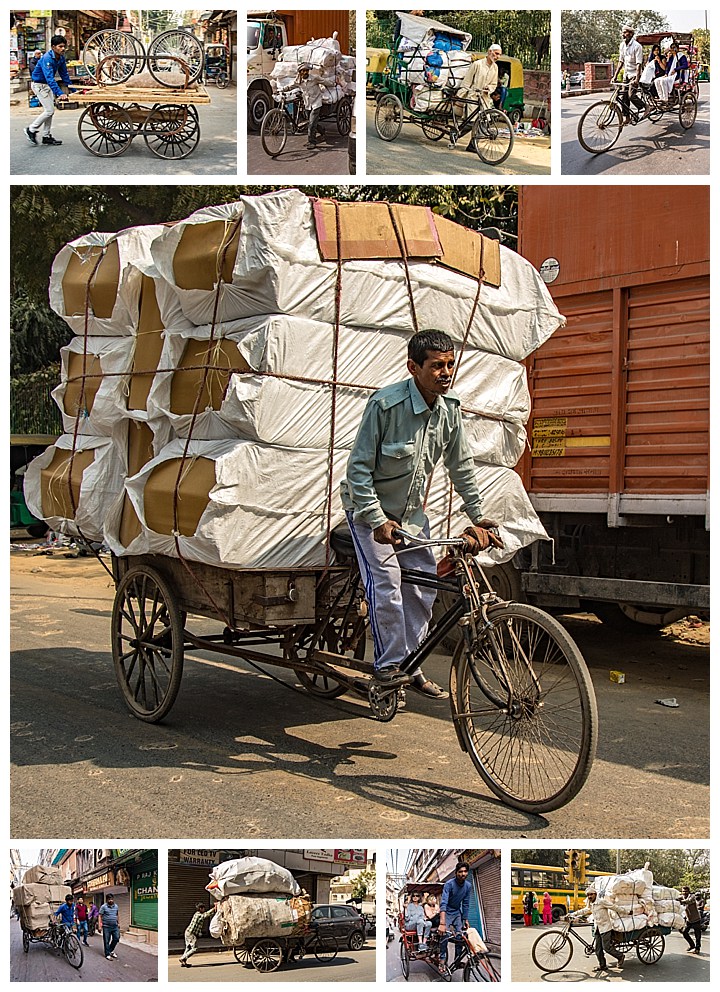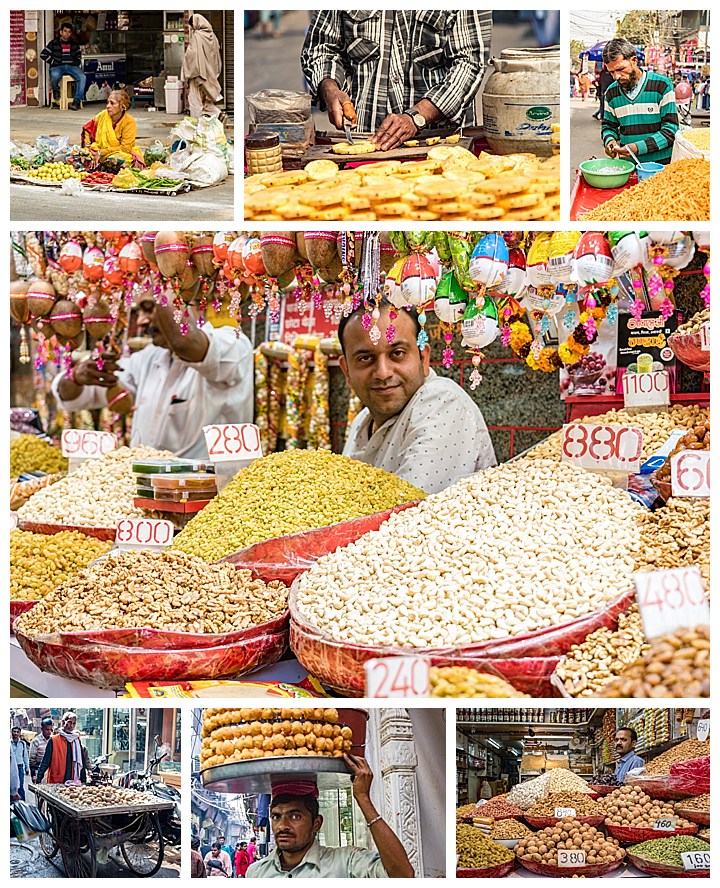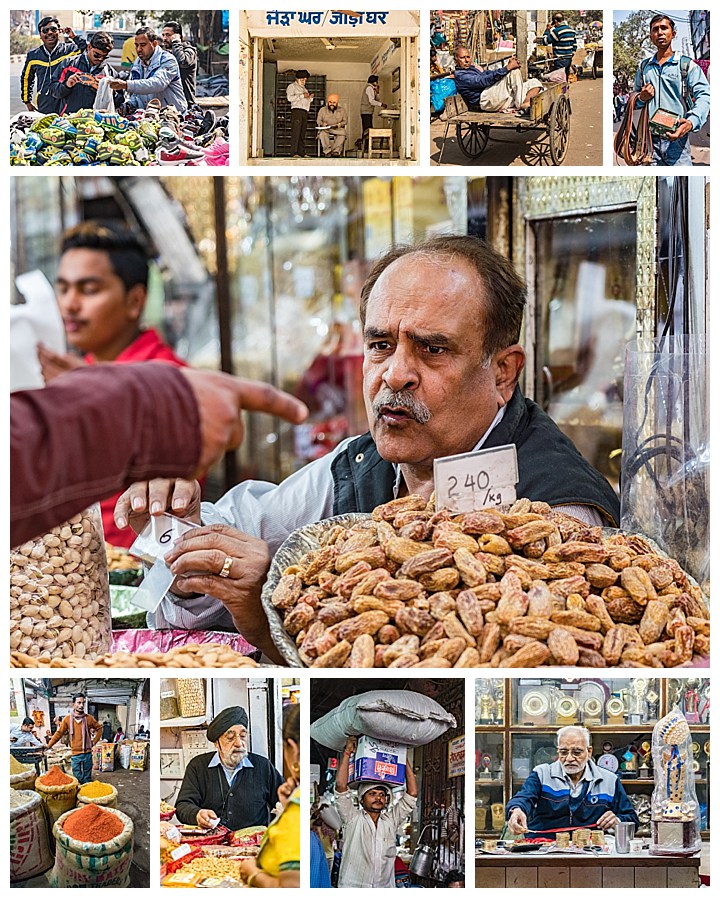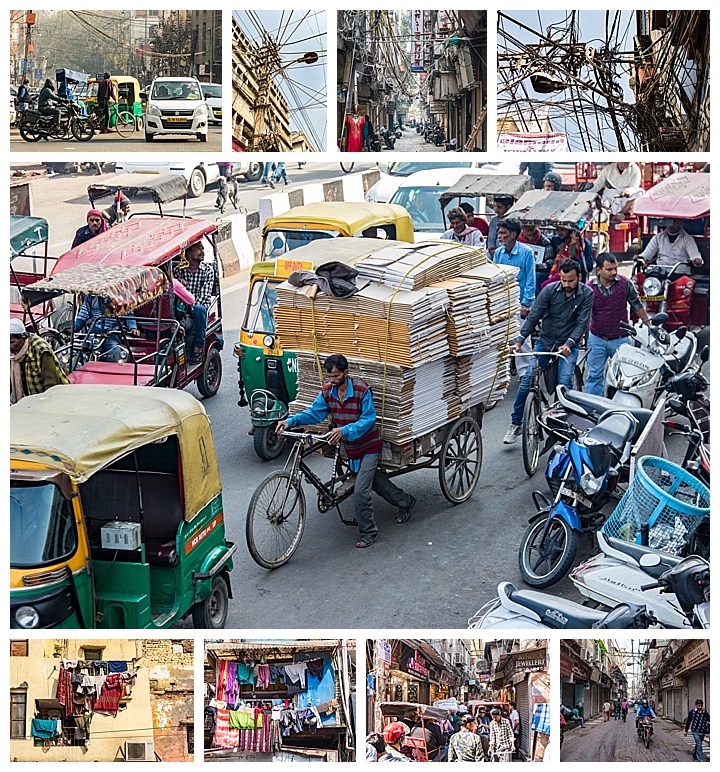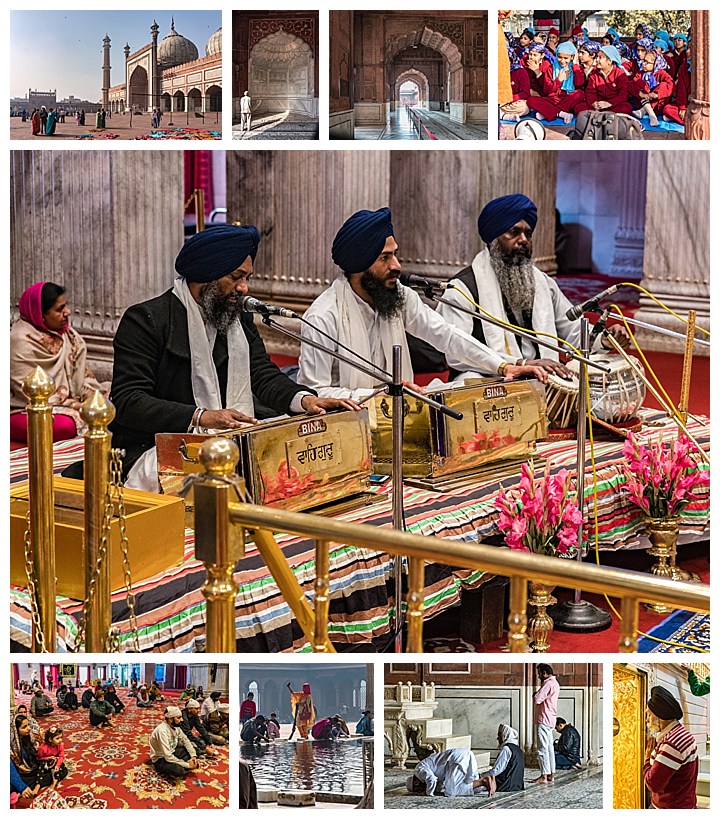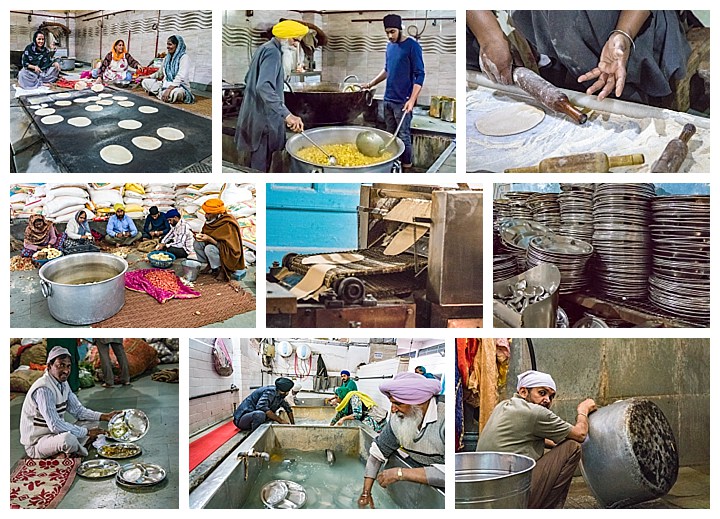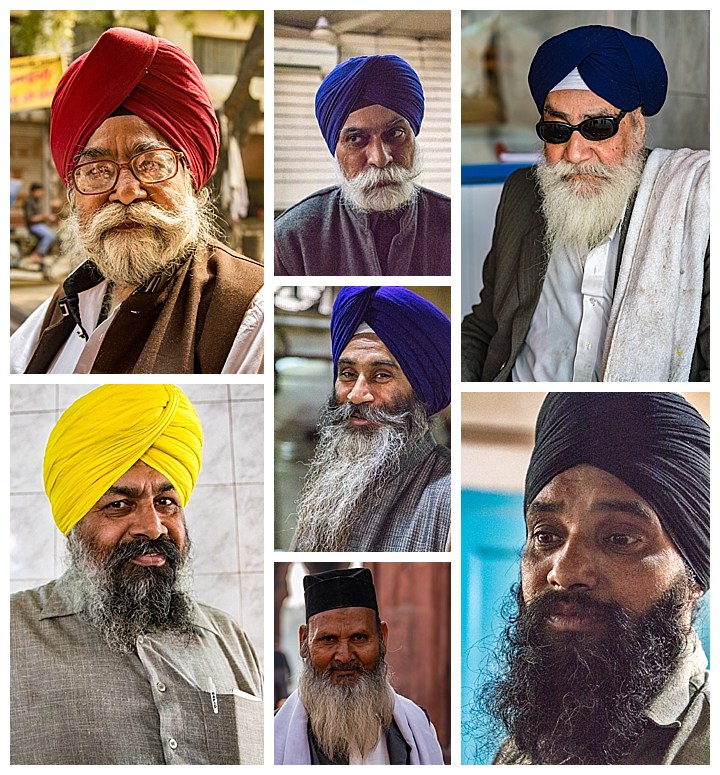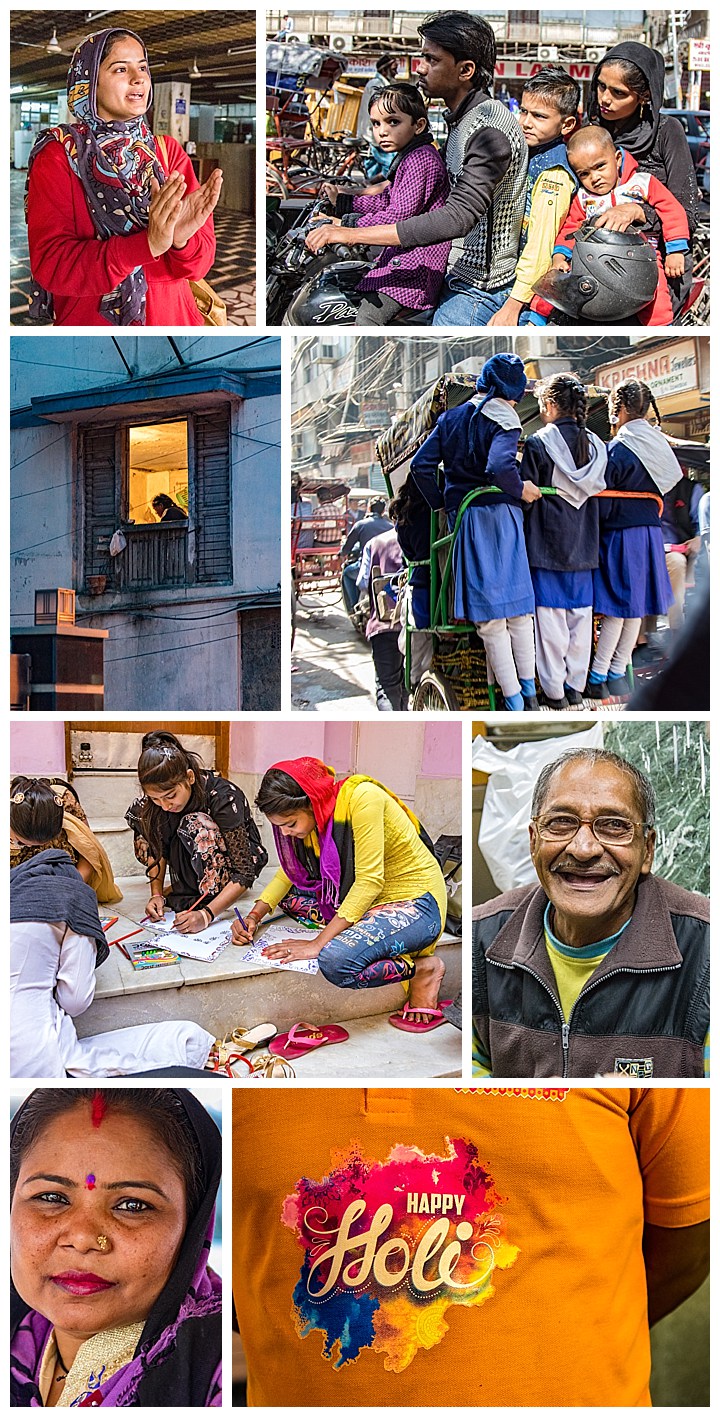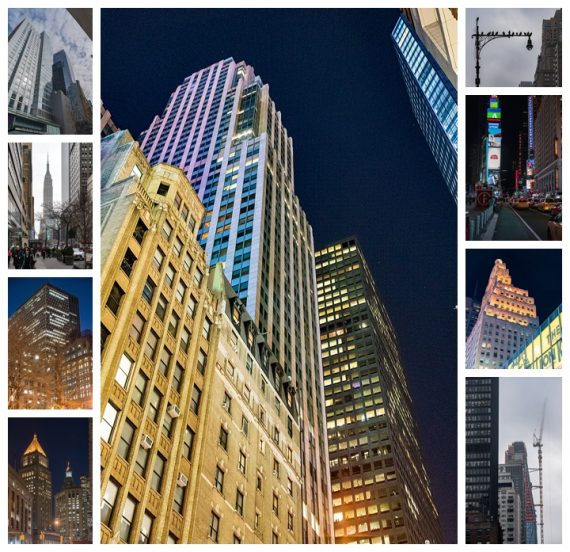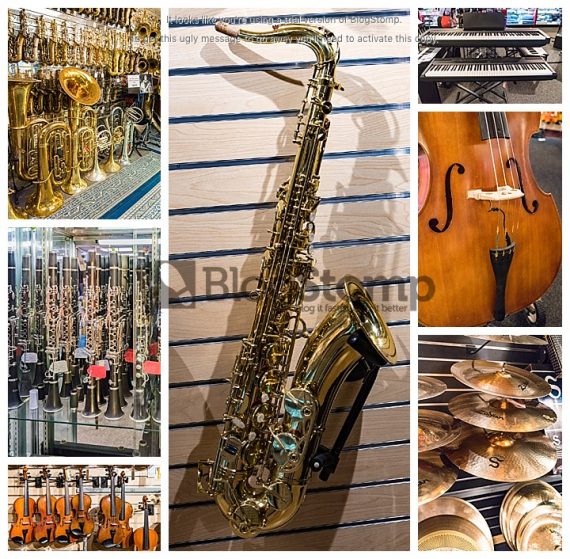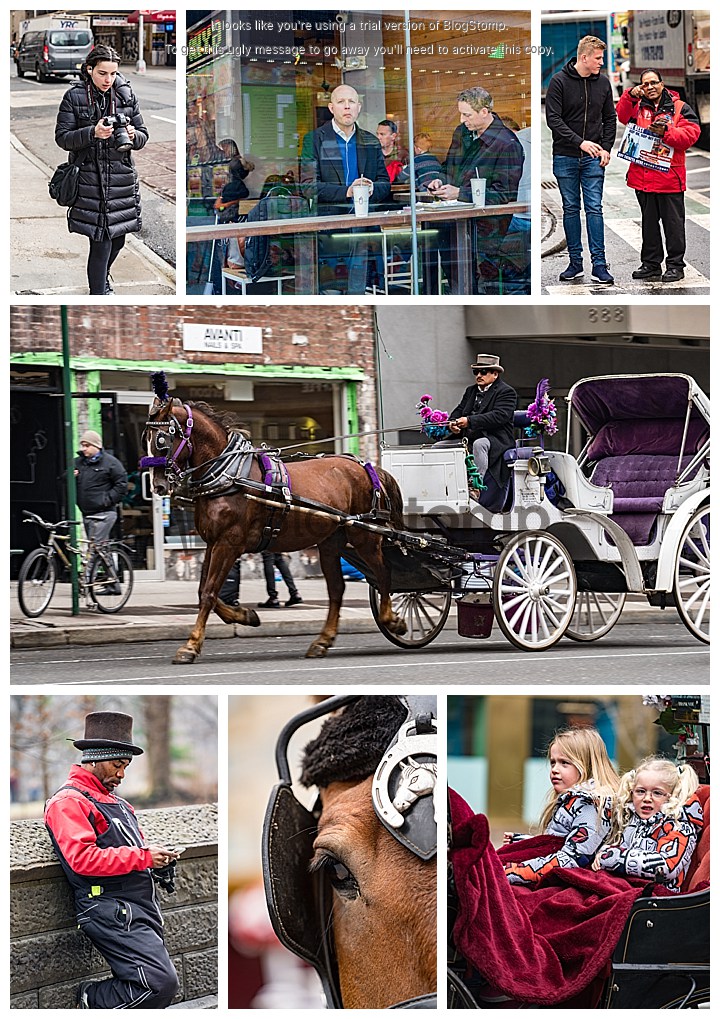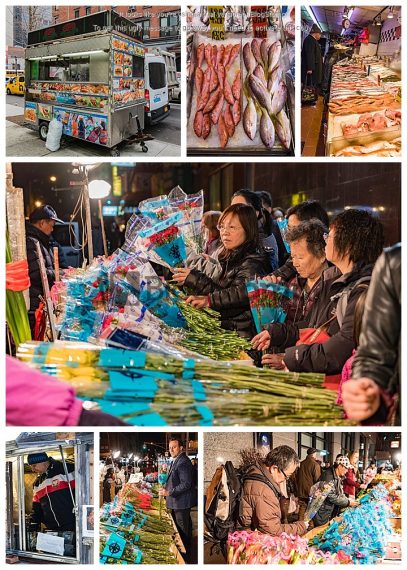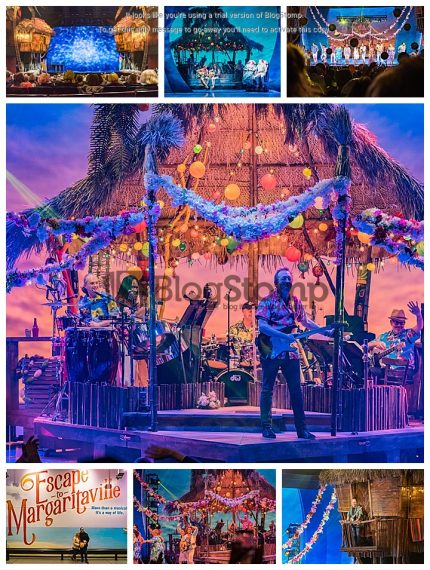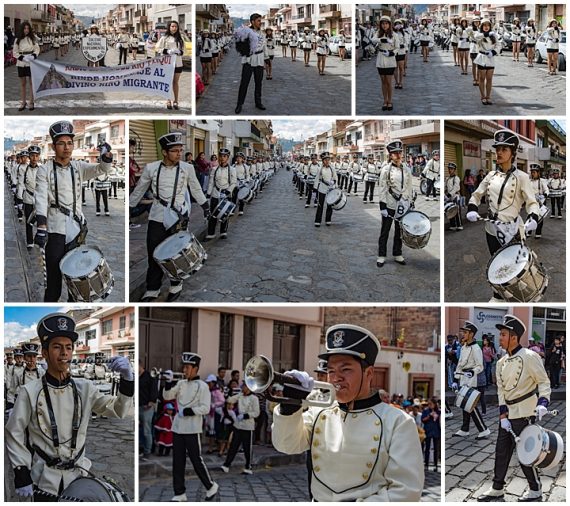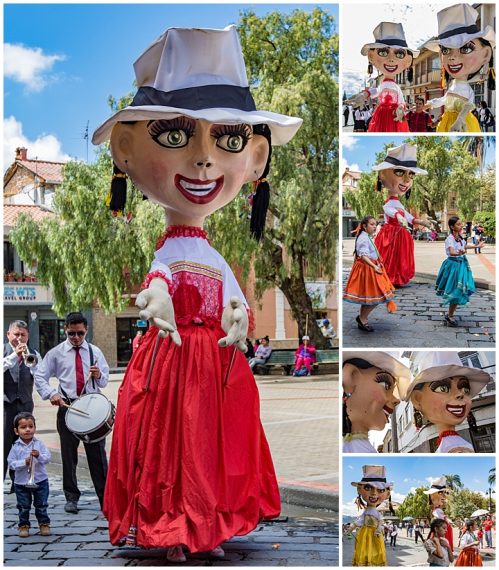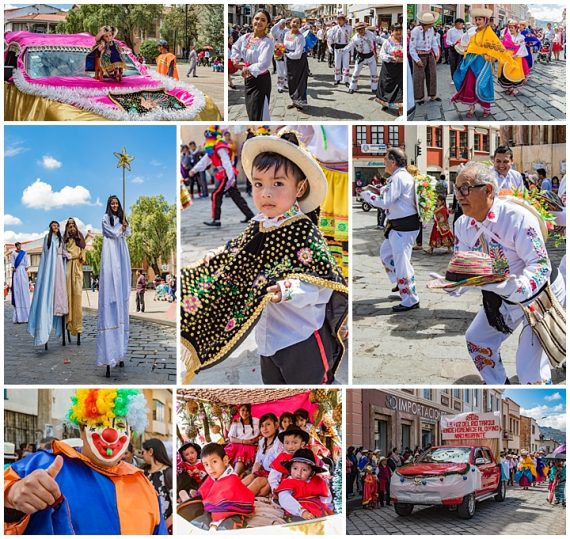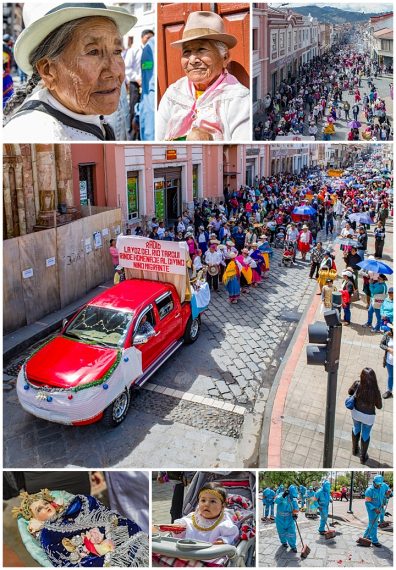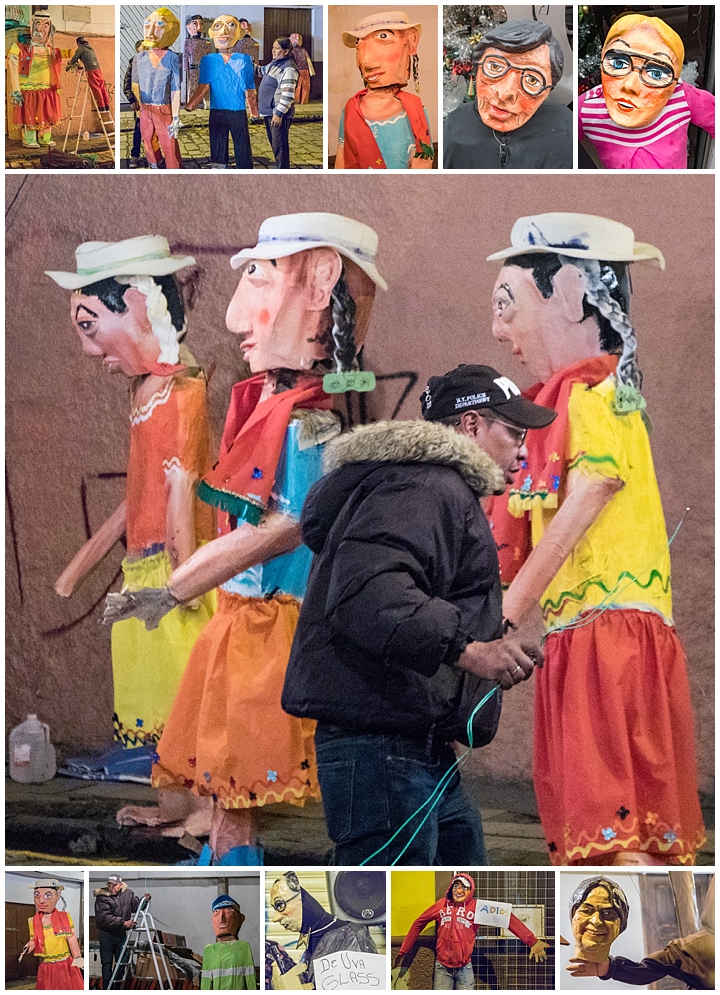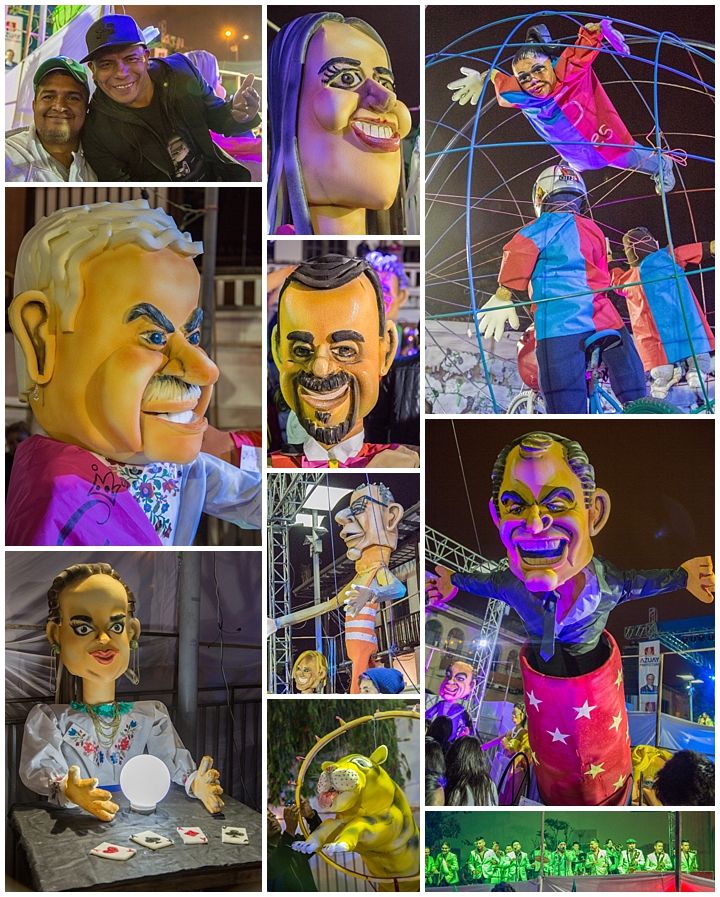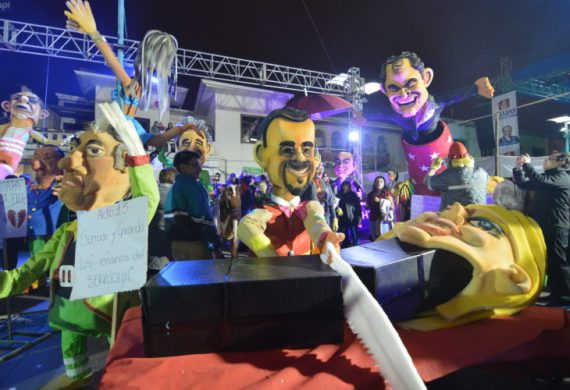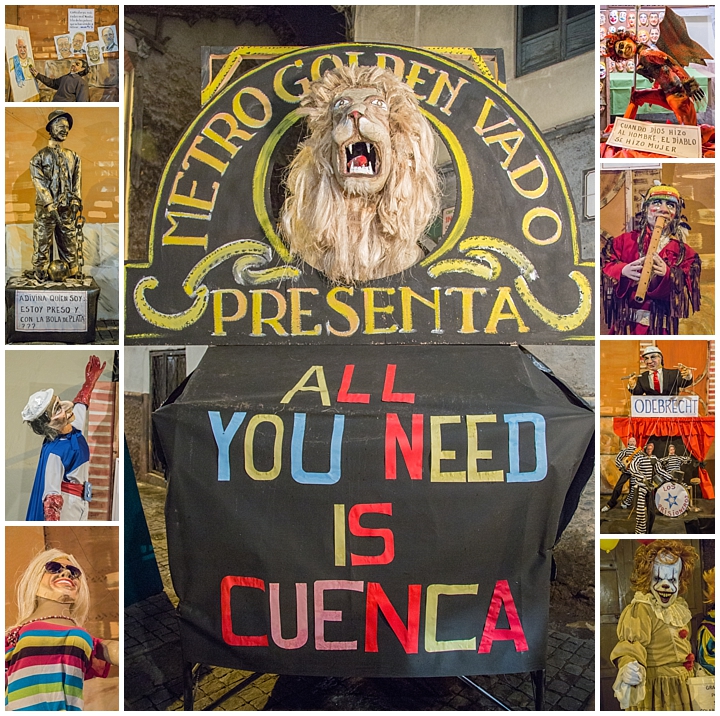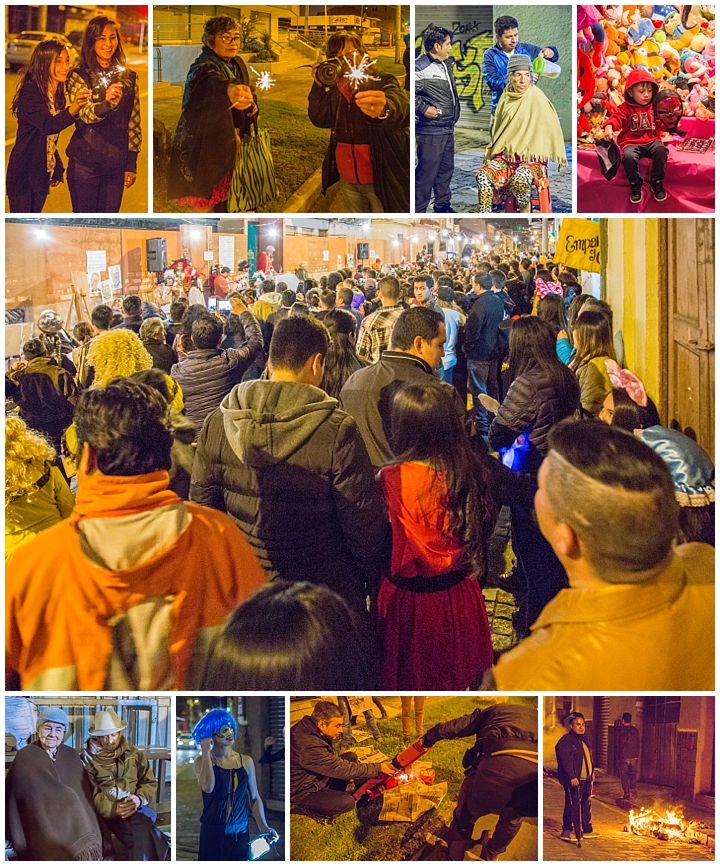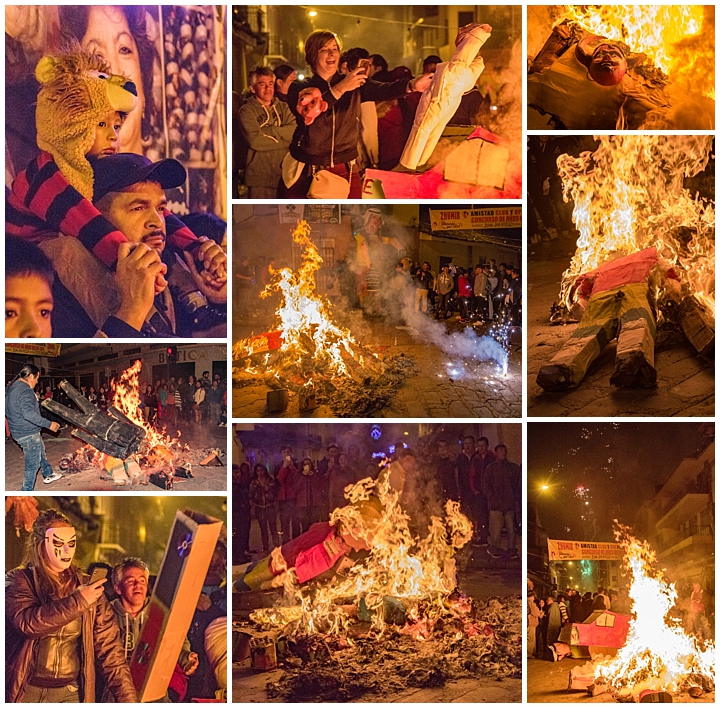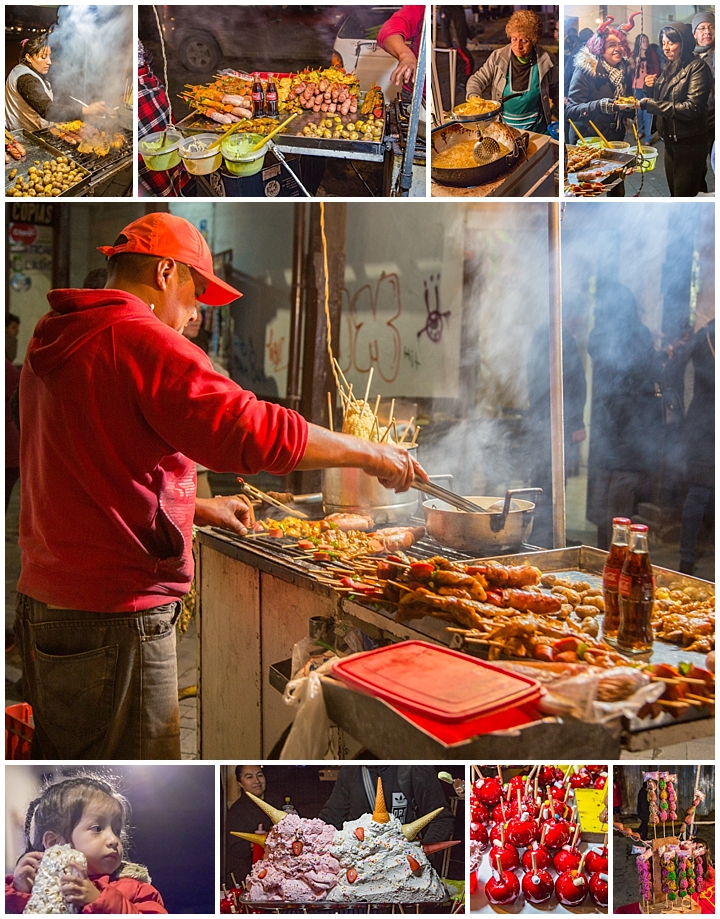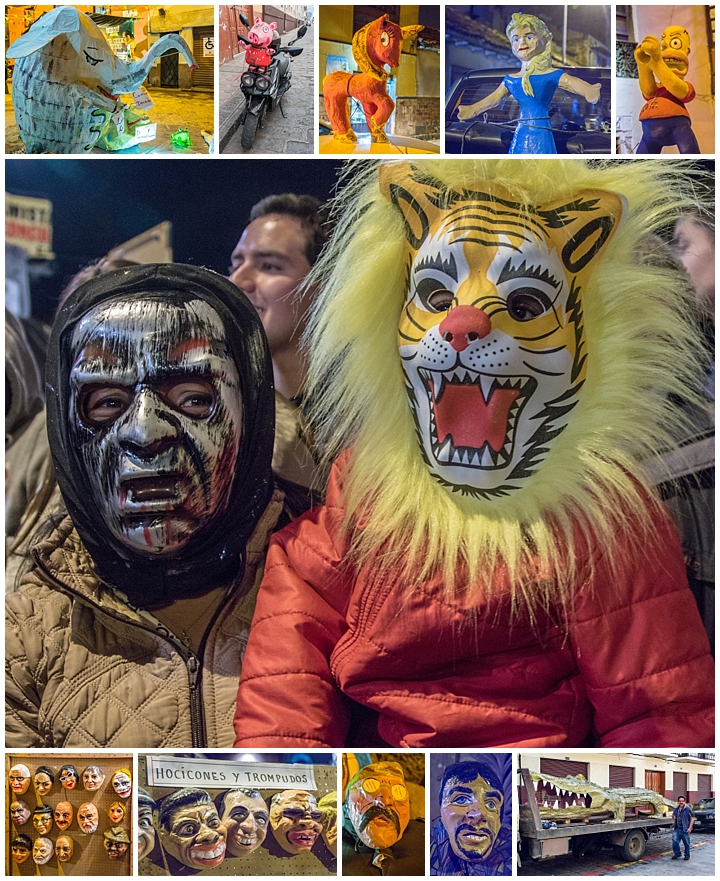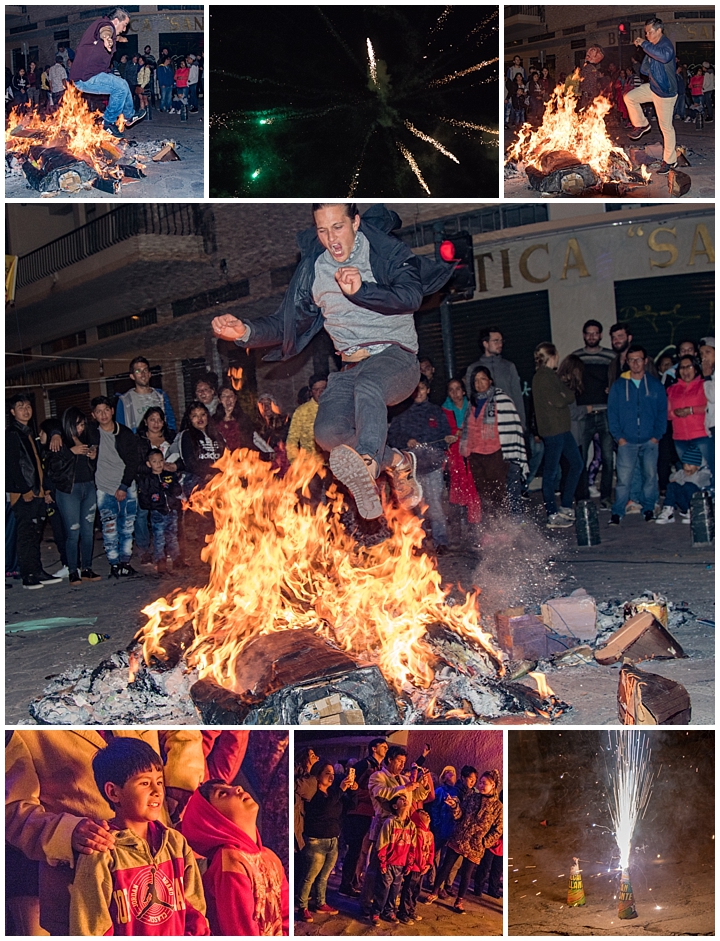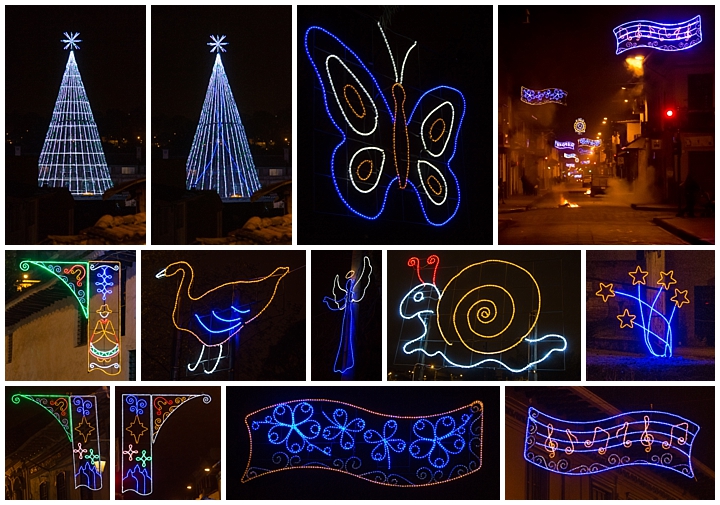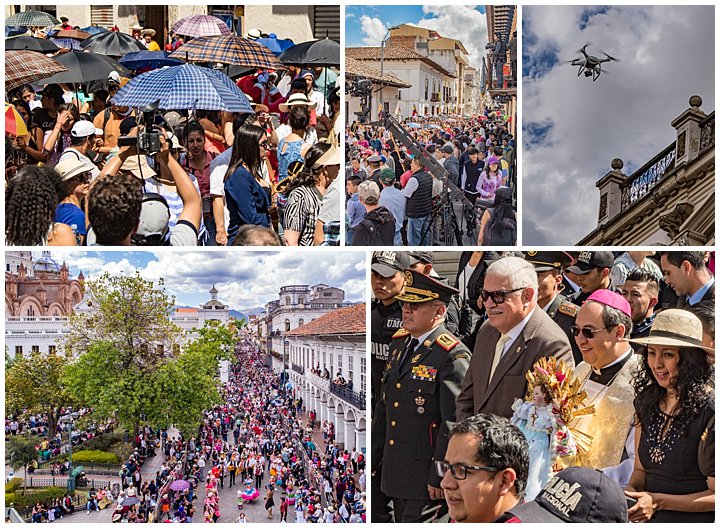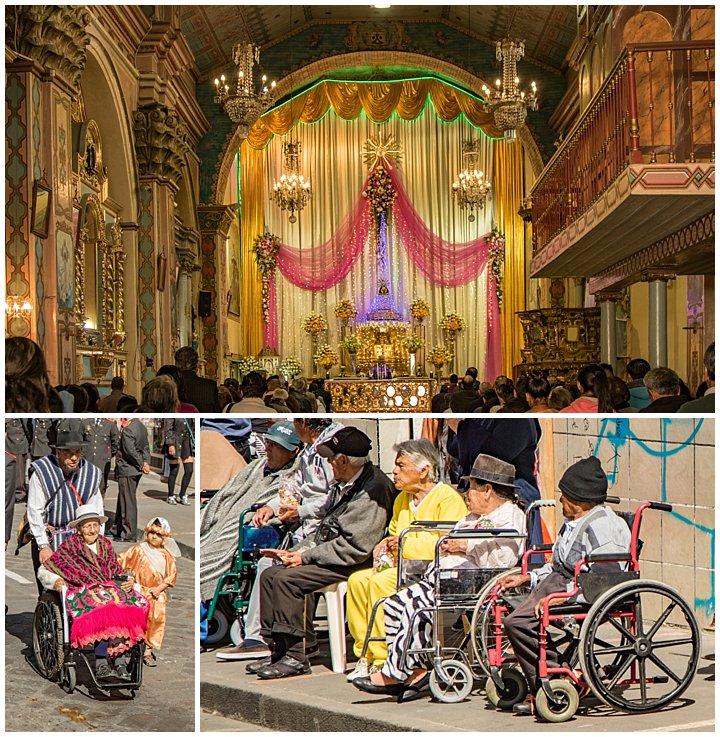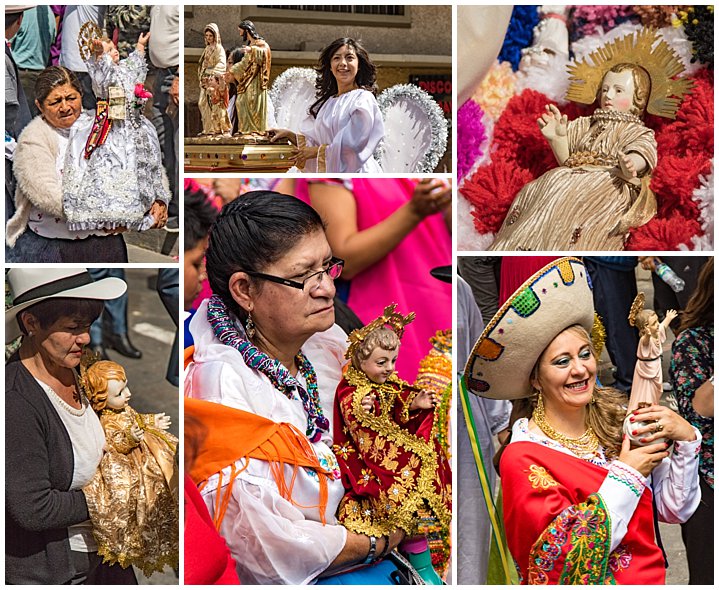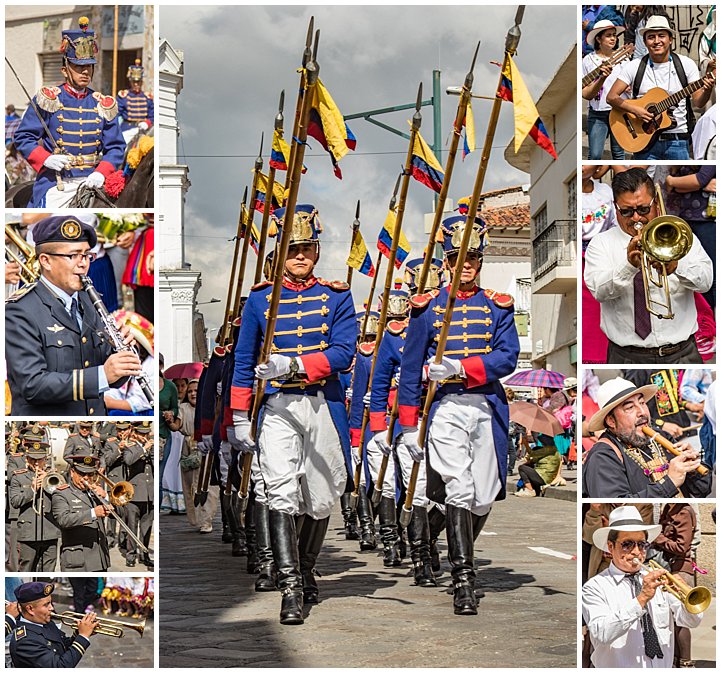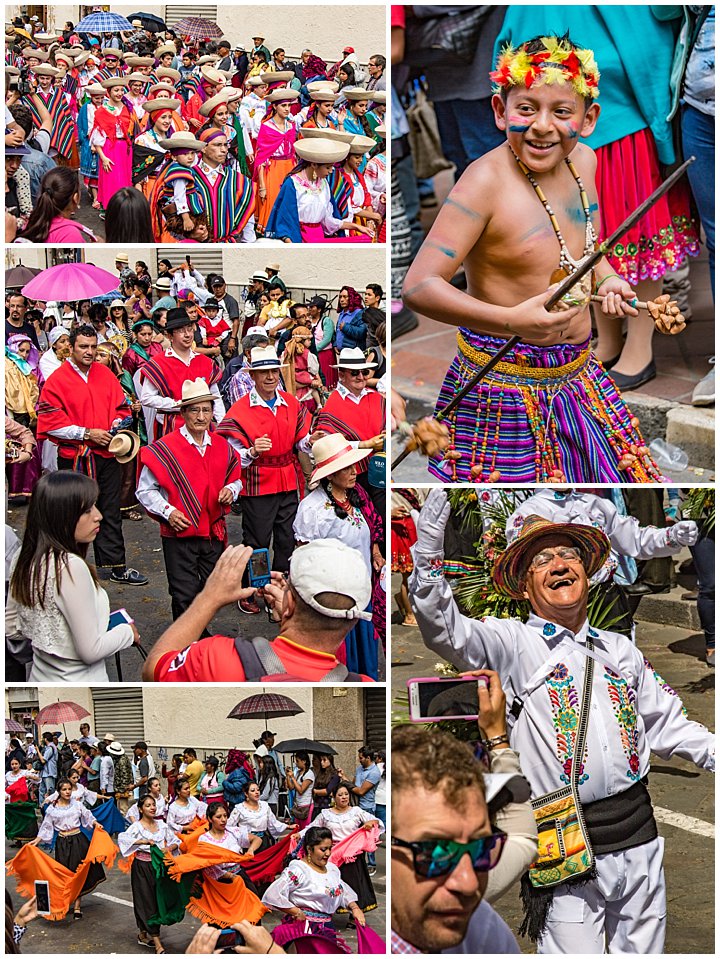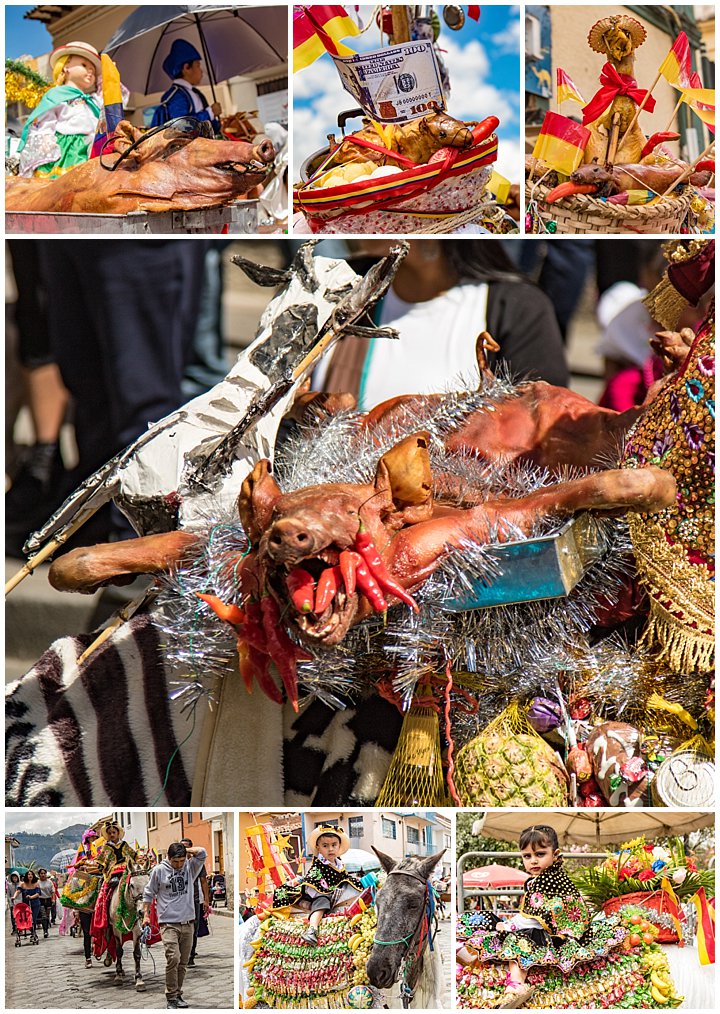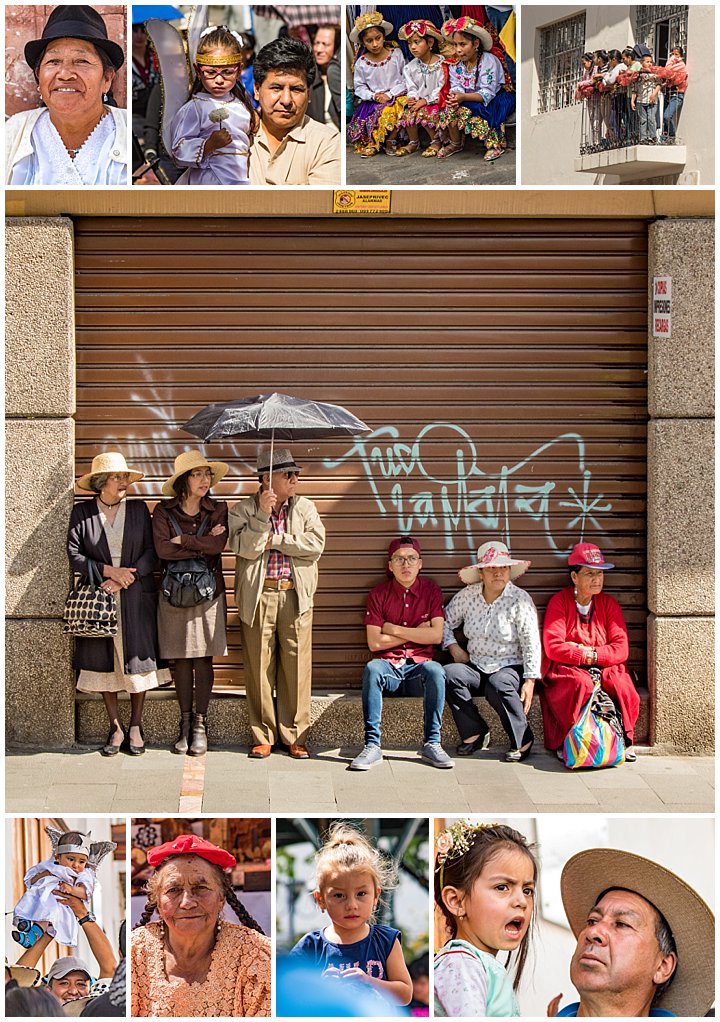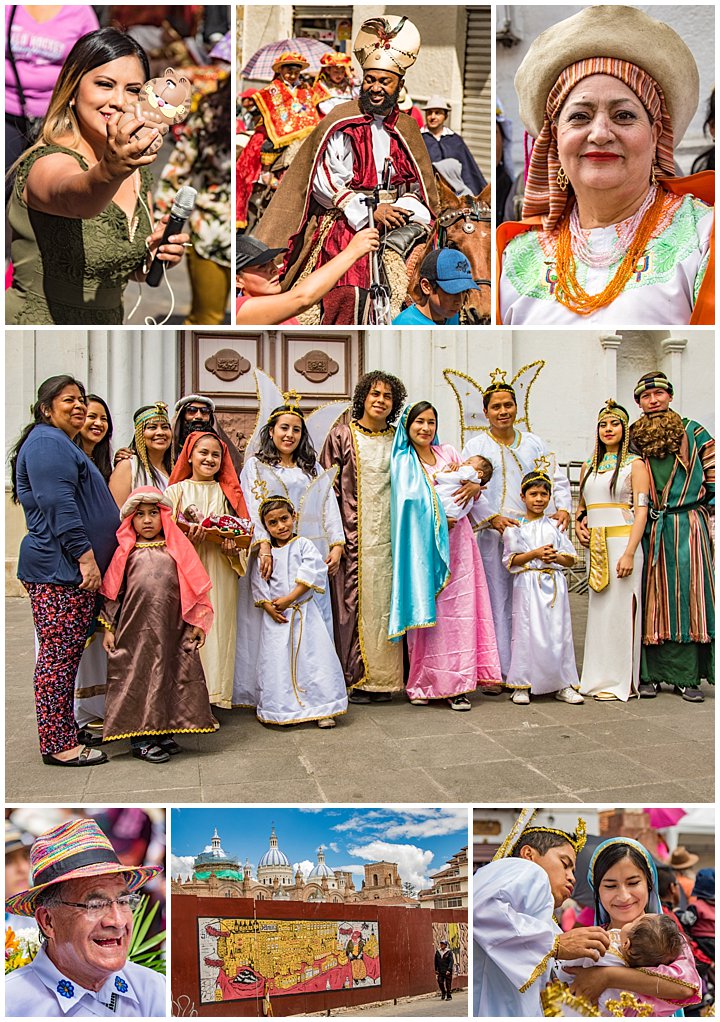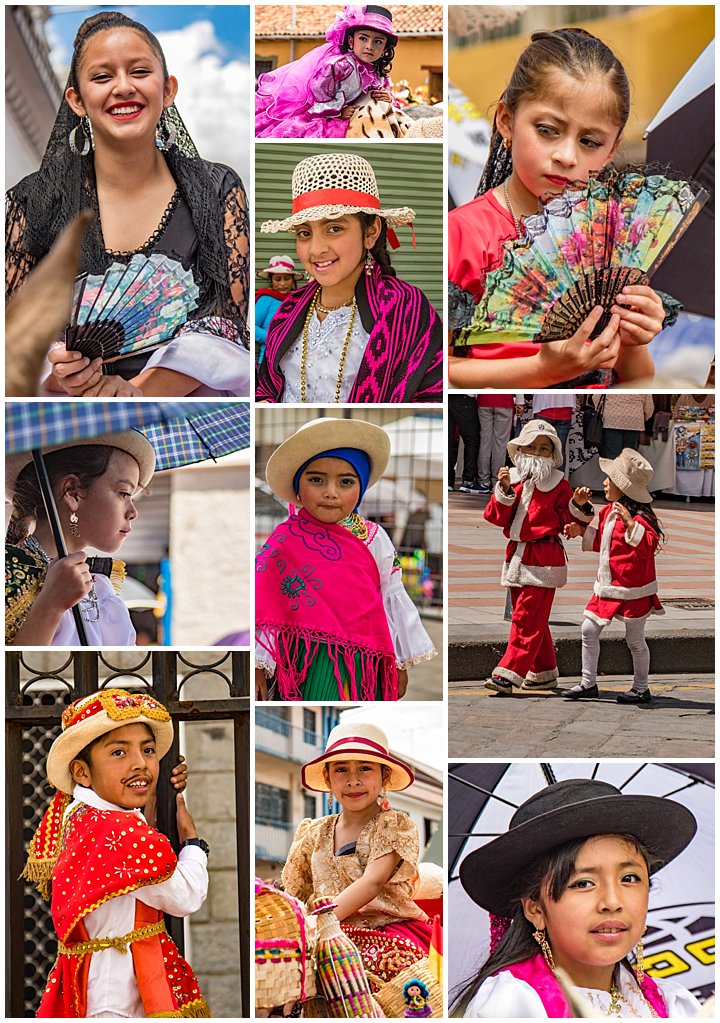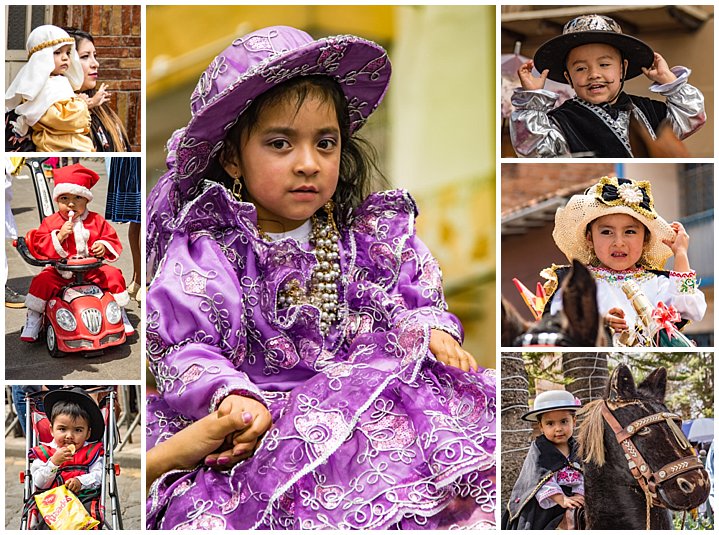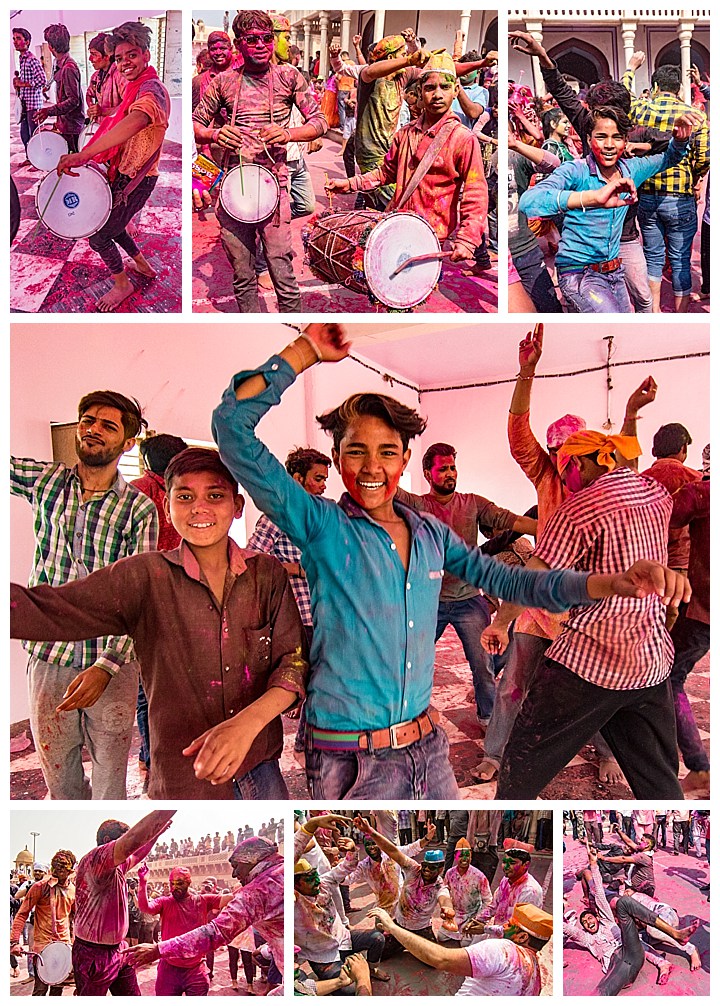
This is the third of three blog posts describing our experience at Holi Festival 2018. For our third day, we moved from Barsana to Nandgaon. Though many aspects of the festival are the same here, there were some very important differences — the biggest being the behavior of the crowds and lots of water mixed with the powder.
In Barsana, it was a mob mentality, with extreme pushing and shoving, and a strong every man for himself approach. The same crowds existed in Nandgaon, but here they walked into the temple orderly, waiting their turn and moving civilly. It was a much more pleasant experience all the way around.
Once in the temple area though, the scene was again dominated by music and dancing. The words were different, since this temple was not dedicated to Rahde, but the beat and the frenetic dancing was the same.
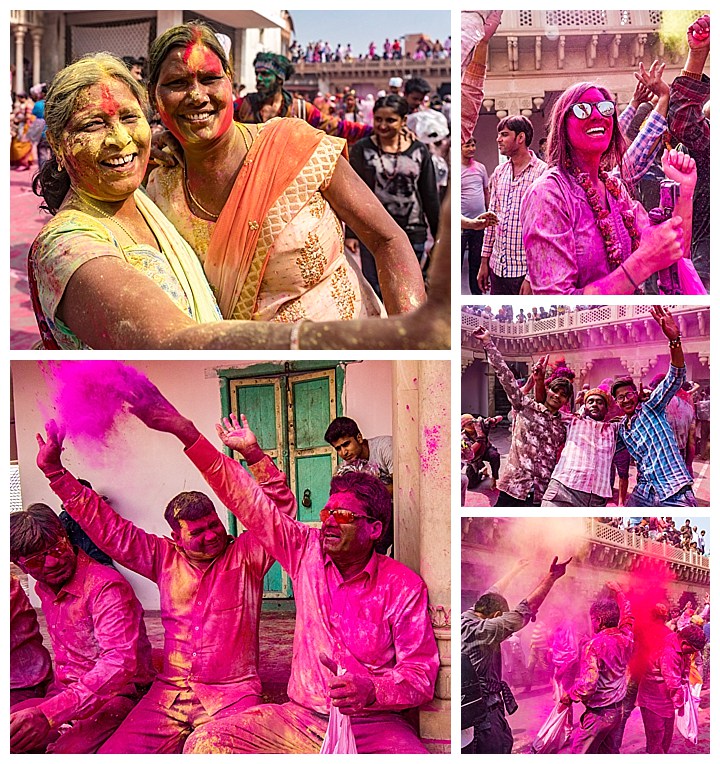
Again, paint was thrown by everyone at everyone. You were not part of the party if you were not covered in paint, mostly red but with some yellow thrown in for good measure.
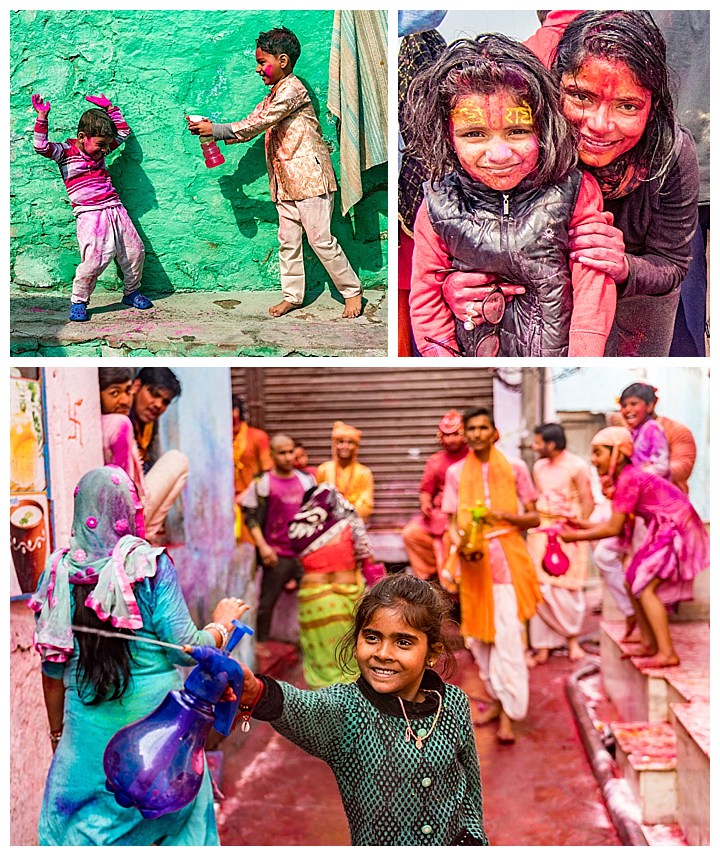
The festival here included lots of water too, and when mixed with powder, it was the makings for a slippery mess. The kids took particular joy in this aspect, and squirt guns and water cannons were manned by anyone under puberty.
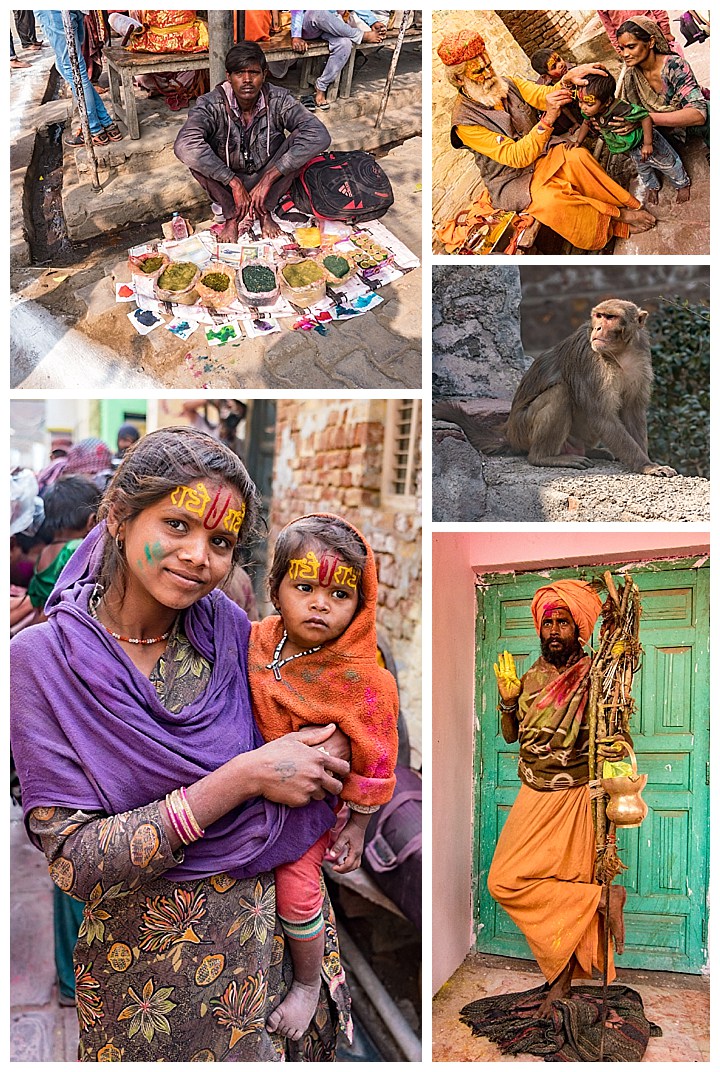
Here a few selected images we were able to capture of the surrounding village, outside of the thrown paint zones.
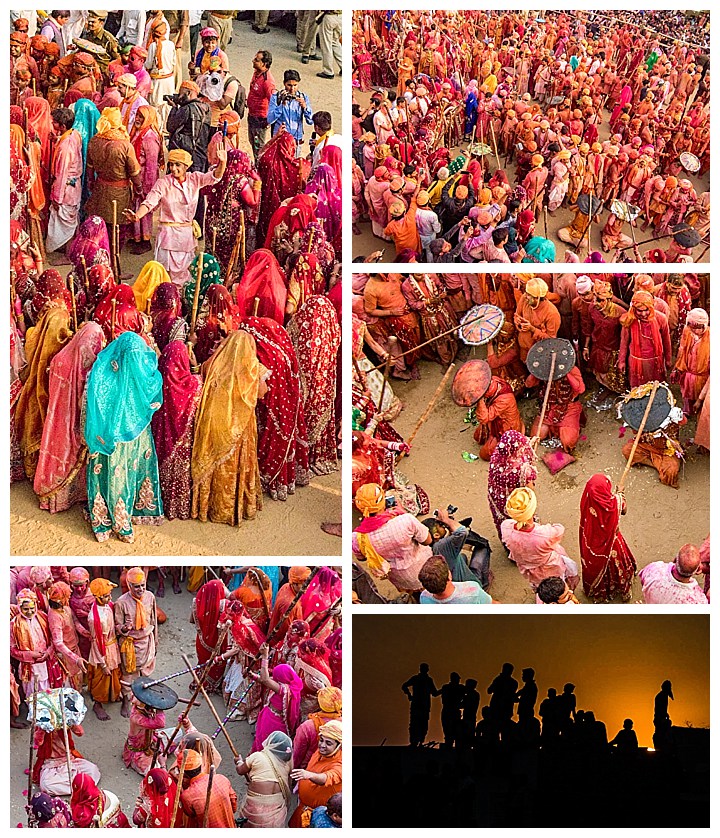
The game of the men being beaten by women moved from Barsana to Nandgaon, so we got to see them again. This time, we went early to a nearby rooftop to secure prime viewing space. When the participants gathered below us, they started with random men and women dancing together (upper-left), then separated into a dozen circles of women around one or more men under shields (upper-right). The bashing then began (middle-right and lower-left) for a full hour, with the women never letting up — though a you could see many of the women were exhausted and the blows did not have as much strength towards the end.
As the sun set (lower-right), new men gradually failed to enter the circles, and the whole party just kind of slowly dissipated. That ended the Holi Festival experience for us in this region. Lots more to come!
Watch 90 seconds of musical pandemonium as the revelers go into frenetic dancing.
Here is another short 70 second clip showing women beating men, this time from our front-row vista on a neighboring rooftop.
